Spring 2025: Mannerism to Post-Impressionism
1/53
There's no tags or description
Looks like no tags are added yet.
Name | Mastery | Learn | Test | Matching | Spaced |
|---|
No study sessions yet.
54 Terms
Artist: Albrecht Dürer
Title: Fall of Man (Adam and Eve)
Medium: Engraving
Period: Northern Renaissance
Location: N/A
Significance: it showcases his mastery of Renaissance techniques and interest in philosophical and theological concepts
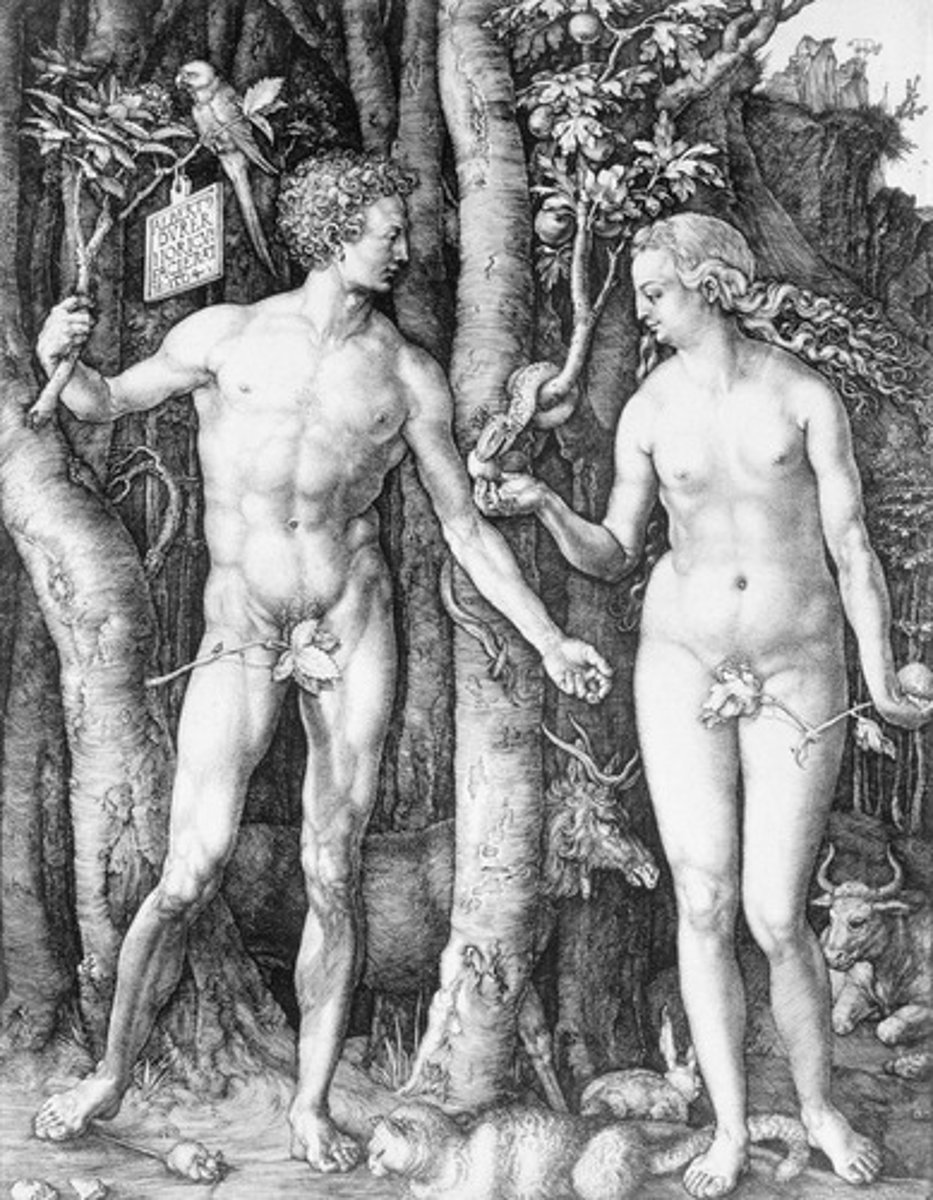
Artist: Hans Holbein the Younge
Title: The French Ambassadors
Medium: Oil and tempera on wood
Period: Northern Renaissance
Location: N/A
Significance: intricate symbolism and portrayal of the Renaissance intellectual and political climate
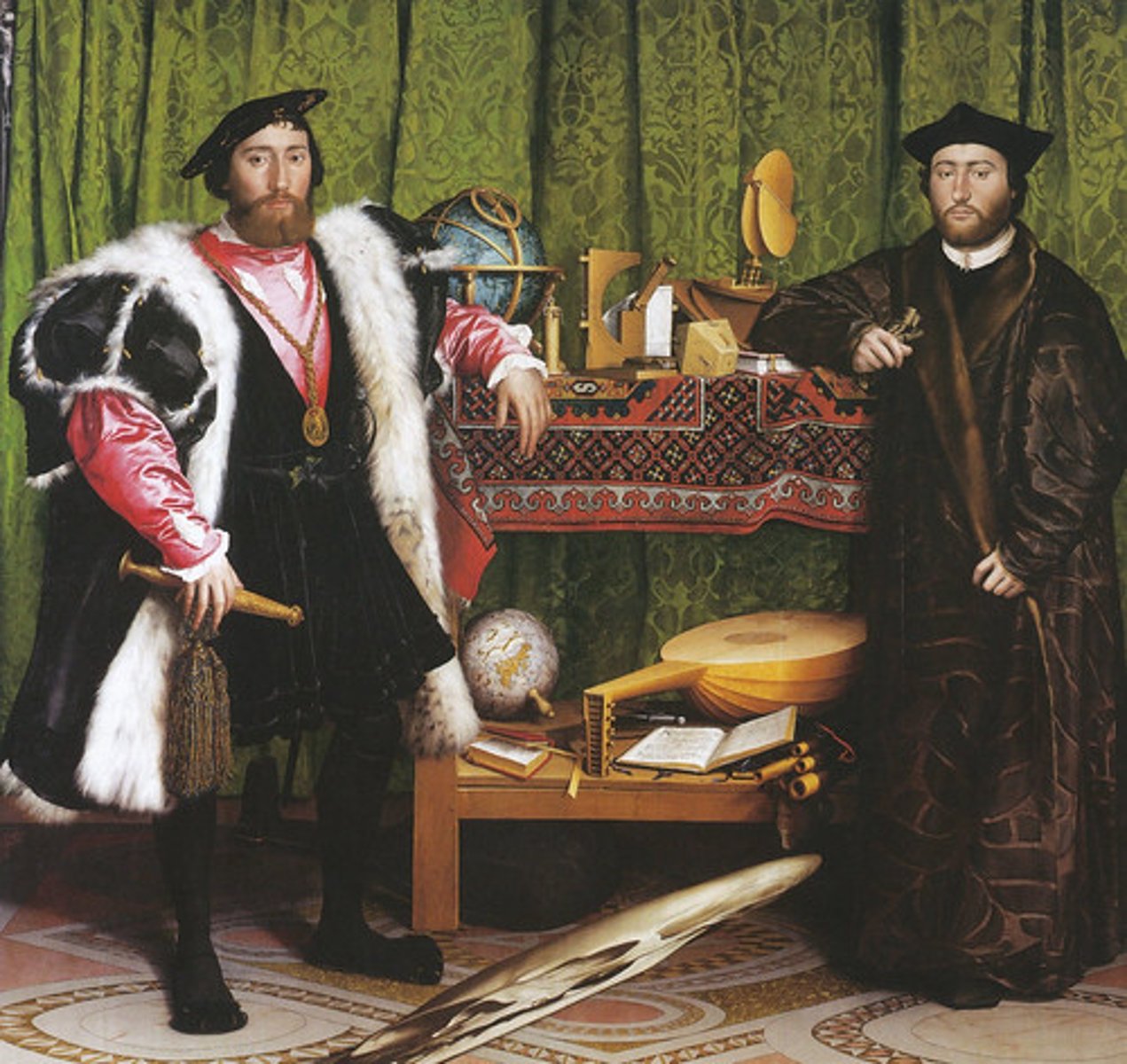
Artist: Pieter Bruegel the Elder
Title: Netherlandish Proverbs
Medium: Oil on wood
Period: Northern Renaissance
Location: N/A
Significance: visually illustrates a vast collection of Dutch proverbs and idioms.
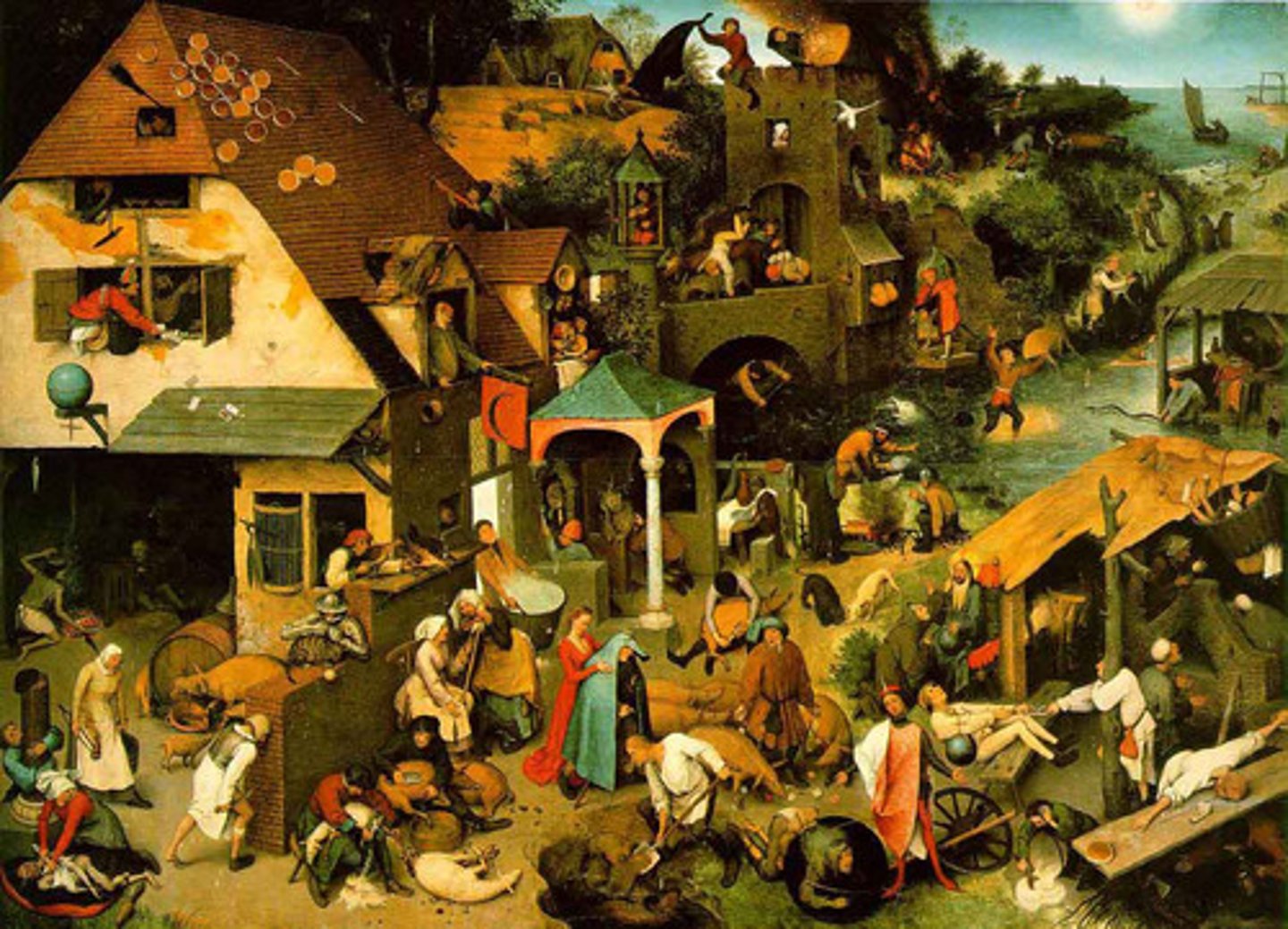
Artist: Parmigianino
Title: Madonna with the Long Neck
Medium: Oil on wood
Period: Italian Mannerism
Location: N/A
Significance: its departure from traditional depictions of the Virgin and child, it shows exaggerated proportions
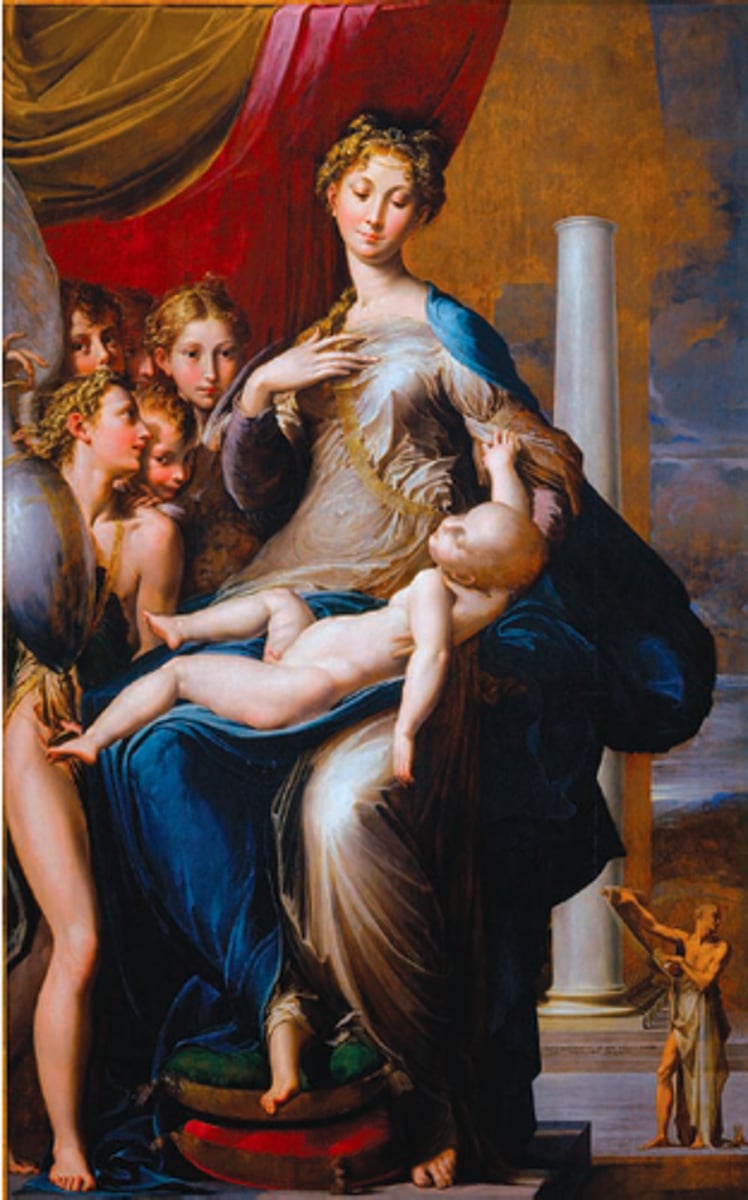
Artist: Jacopo da Pontormo
Title: Entombment of Christ
Medium: Oil on wood
Period: Italian Mannerism
Location: N/A
Significance: innovative approach to religious art during the mannerist period
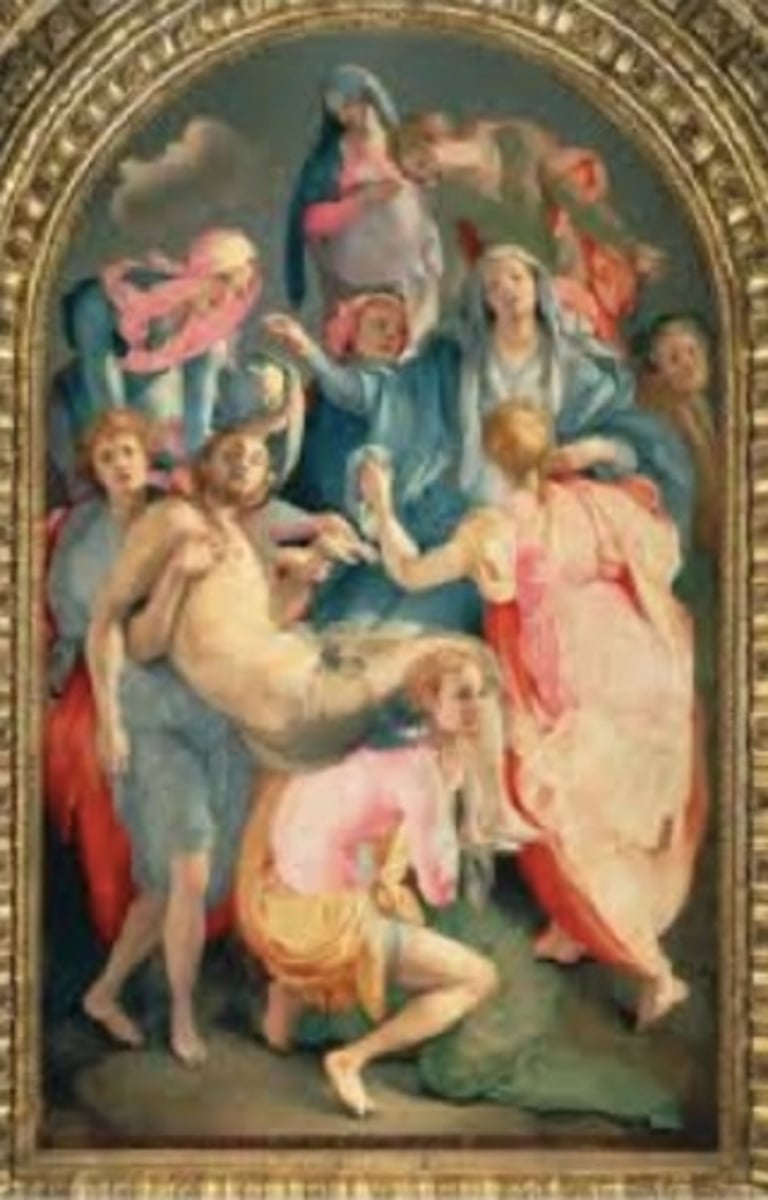
Artist: El Greco
Title: Burial of Count Orgaz
Period: Oil on canvas
Location: Santo Tomé, Toledo
Period: Spanish Mannerism
Significance: a representation of both earthly and celestial realms
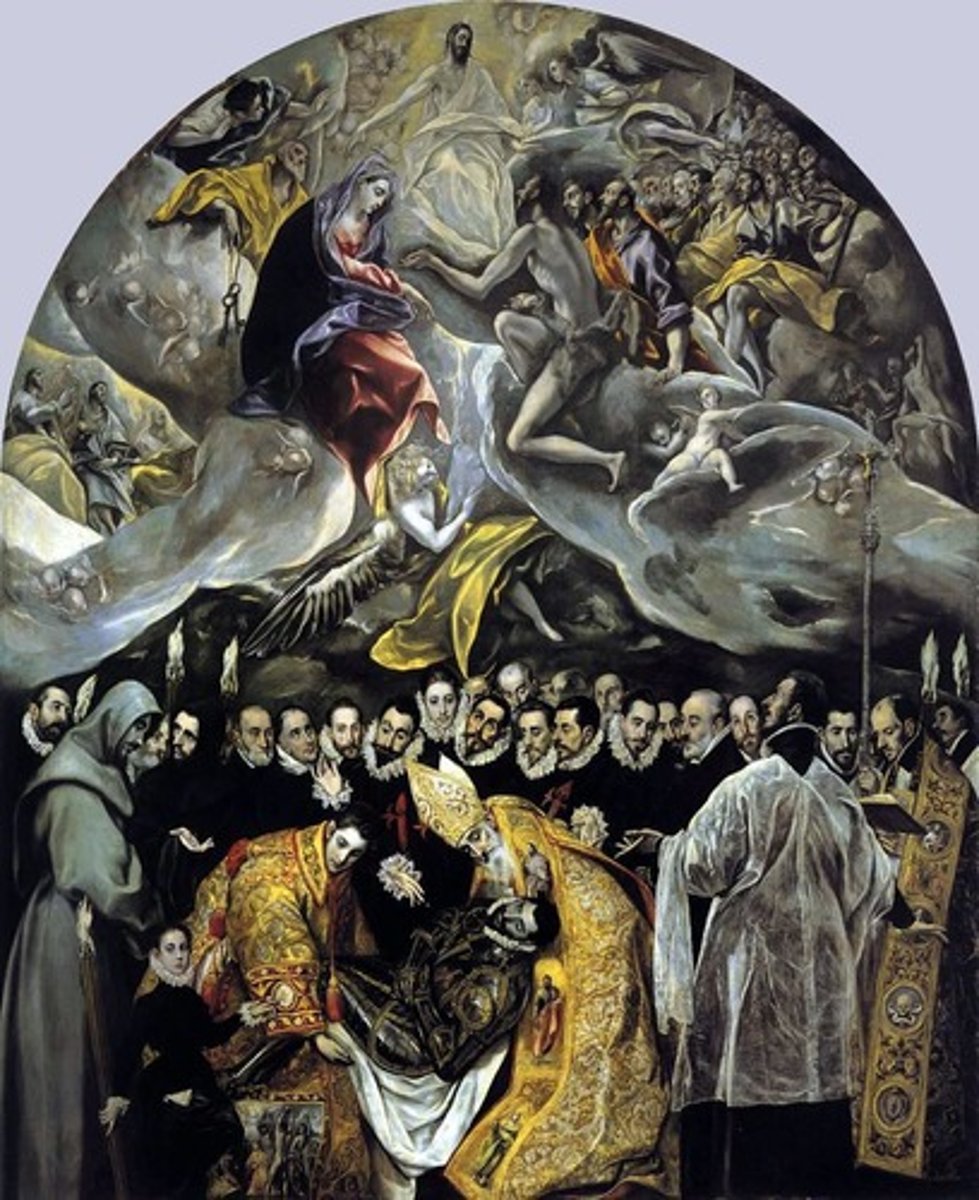
Artist: Gian Lorenzo Bernini
Title: Ecstasy of Saint Teresa
Medium: marble, stucco and gilt
Location: Santa Maria della Vittoria, Rome
Period: Italian Baroque
Significance: illustrates a mystical experience
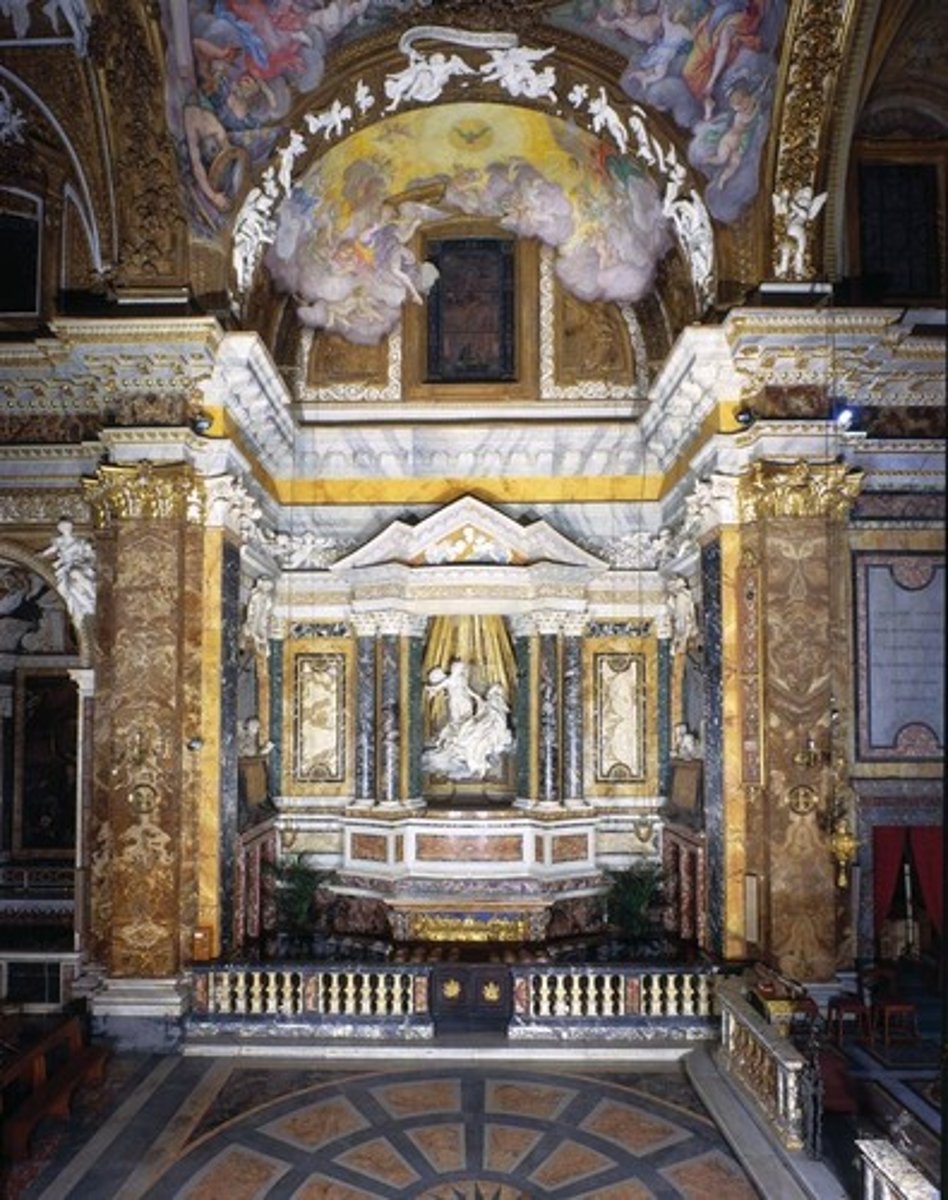
Artist: Gian Lorenzo Bernini
Title: Apollo and Daphne
Medium: marble
Location: Galleria Borghese, Rome, Italy
Period: Italian Baroque
Significance: an allegory to celebrate the dizzying power of art.
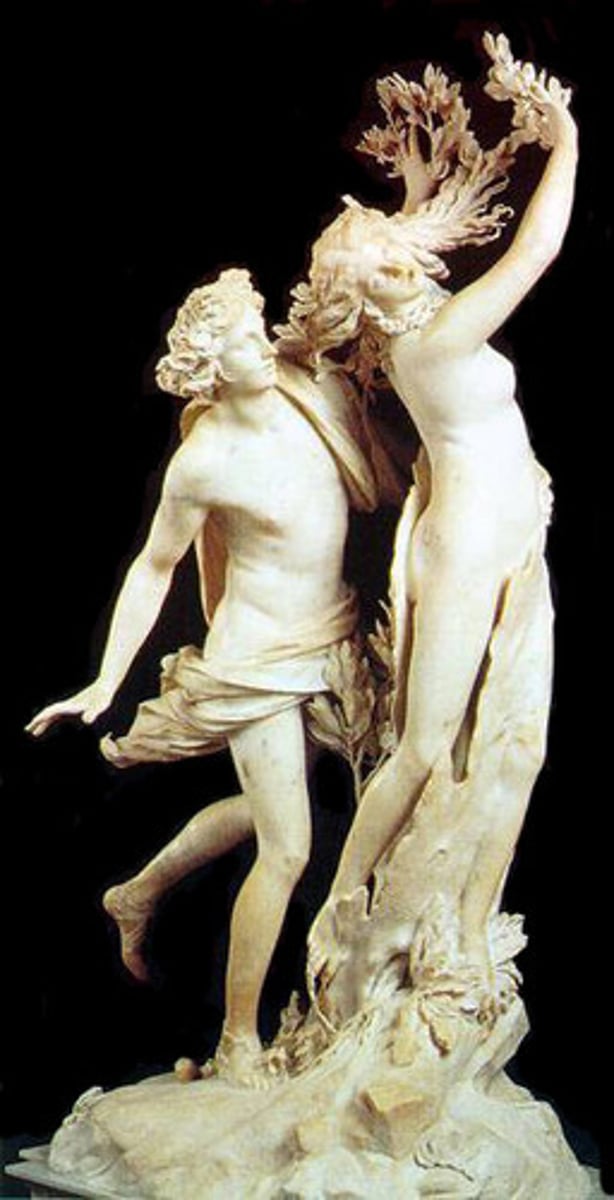
Artist: Caravaggio
Title: The Calling of Saint Matthew
Medium: Oil on canvas
Location: San Luigi dei Francesi, Rome
Period: Italian Baroque
Significance: shows the moment Jesus calls the tax collector matthew to be one of his disciples
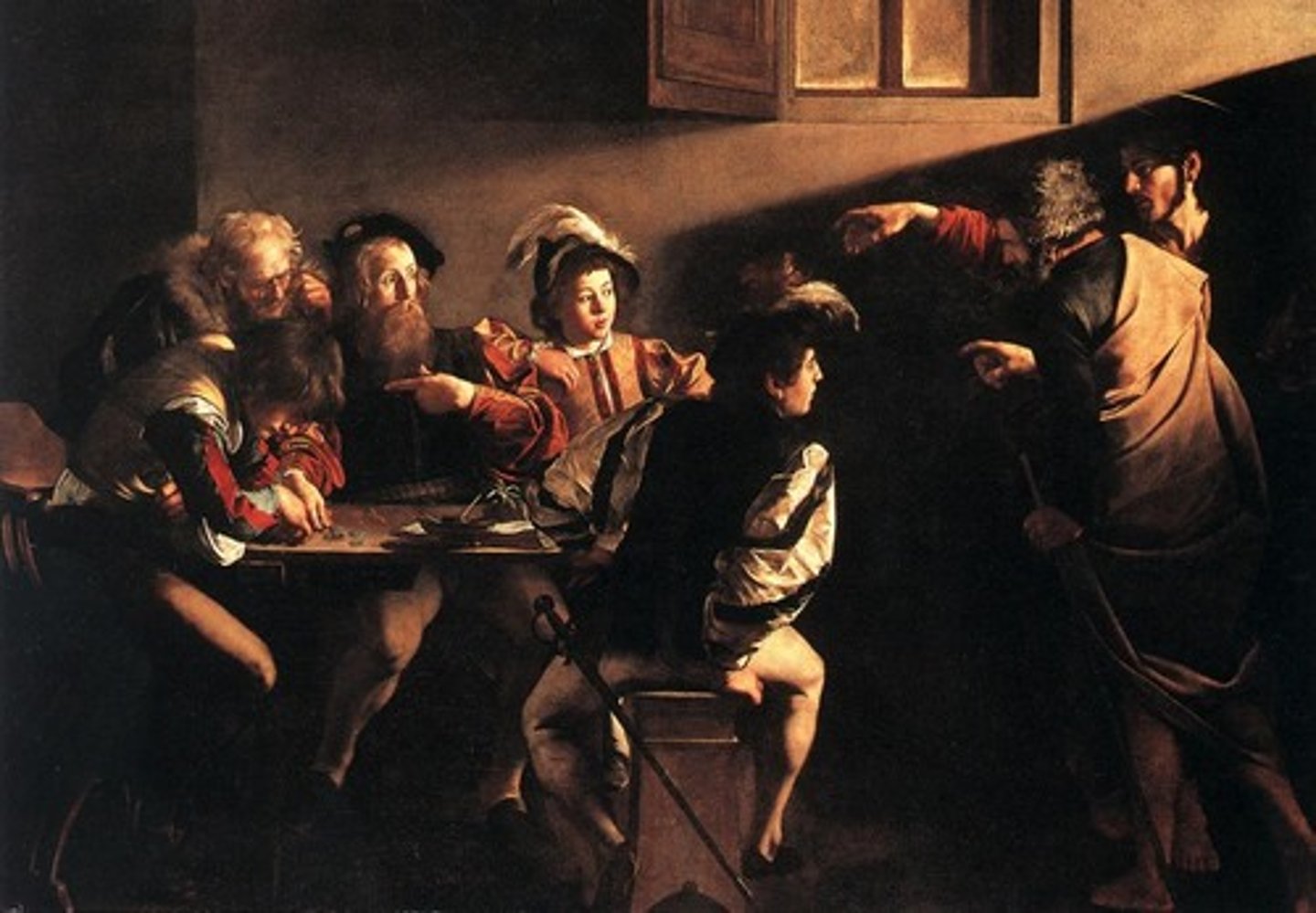
Artist: Caravaggio
Title: Conversion of Saint Paul
Medium: Oil on canvas
Location: Cerasi chapel, Santa Maria del Popolo, Rome, Italy
Period: Italian Baroque
Significance: shows the moment when saul the persecutor of christians, is converted into Christianity
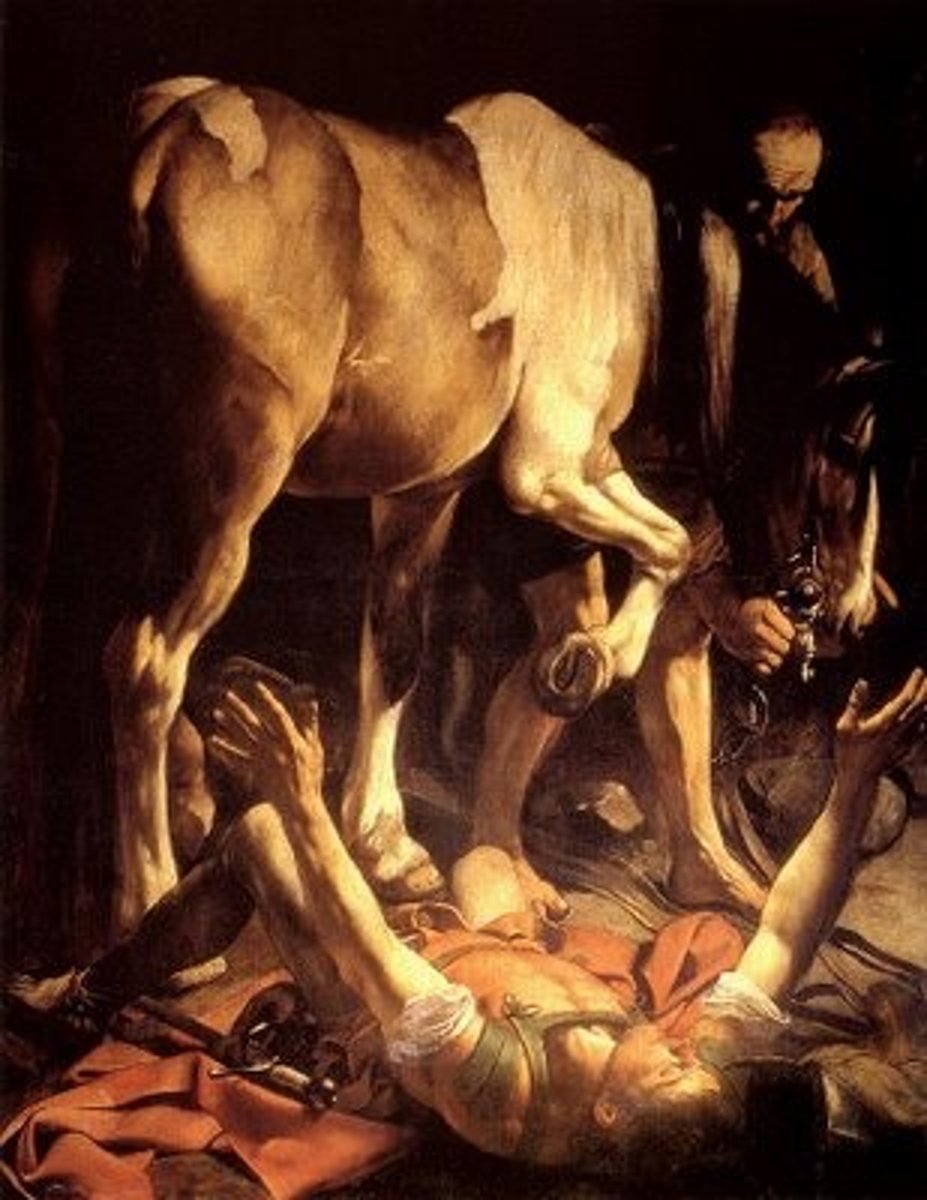
Artist: Annibale Carracci
Title: Love of the Gods
Medium: Fresco
Location: Palazzo Farnese, Rome, Italy
Period: Italian Baroque
Significance: a celebration of classical mythology and the complexities of love.
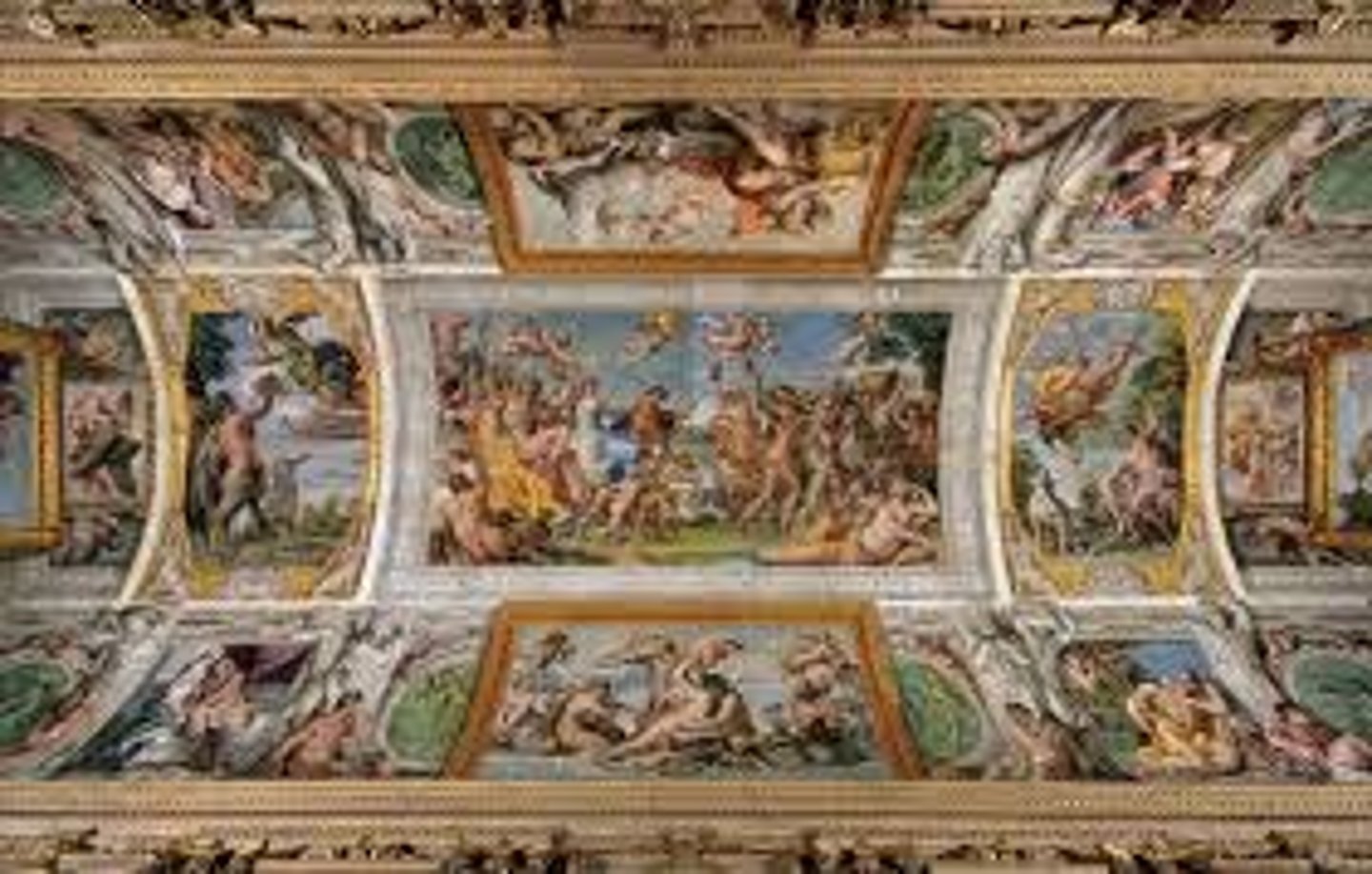
Artist: Artemisia Gentileschi
Title: Self-Portrait as the Allegory of Painting
Medium: Oil on canvas
Location: n/a
Period: Italian Baroque
Significance: combines a representation of the artist with a symbolic embodiment of the art form itself
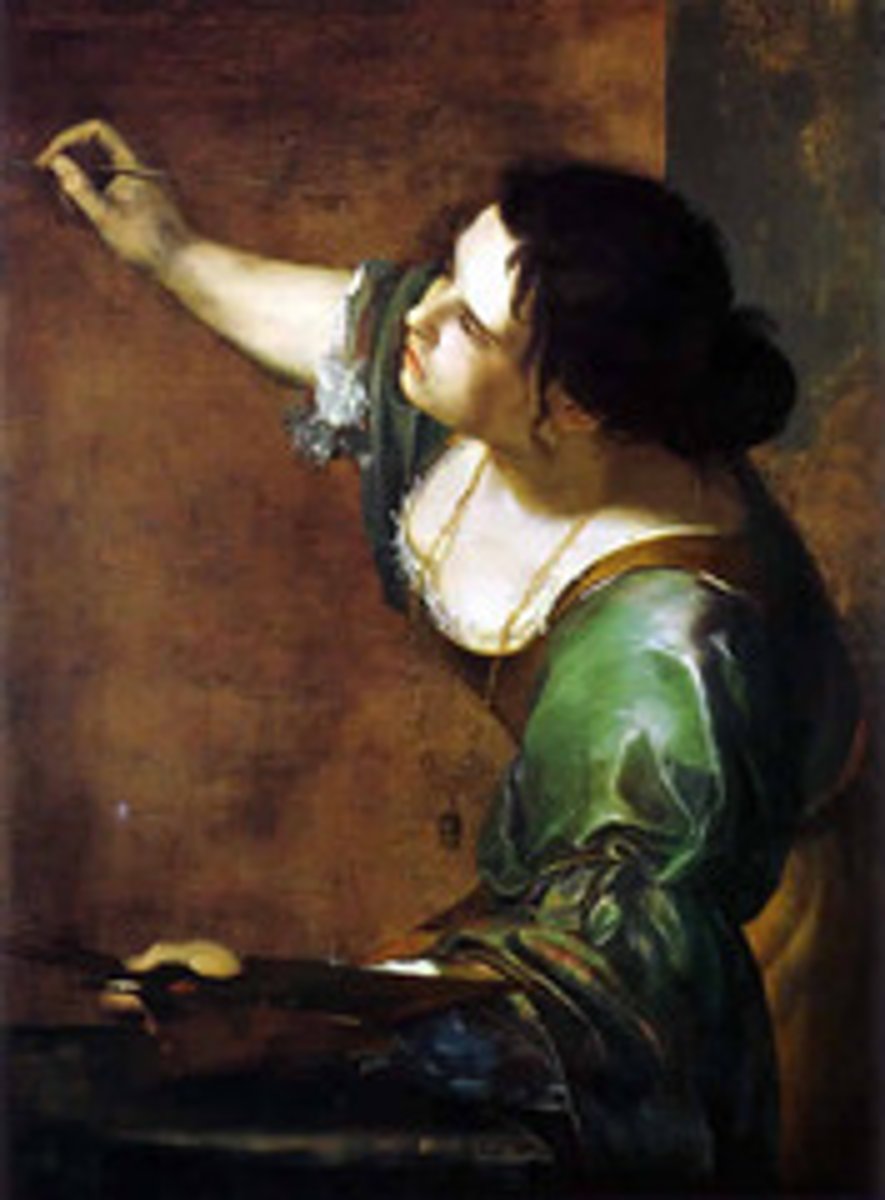
Artist: Diego Velázquez
Title: Las Meninas
Medium: Oil on canvas
Location: n/a
Period: Spanish Baroque
Significance: explores themes of illusion , reality, and the role of the artist
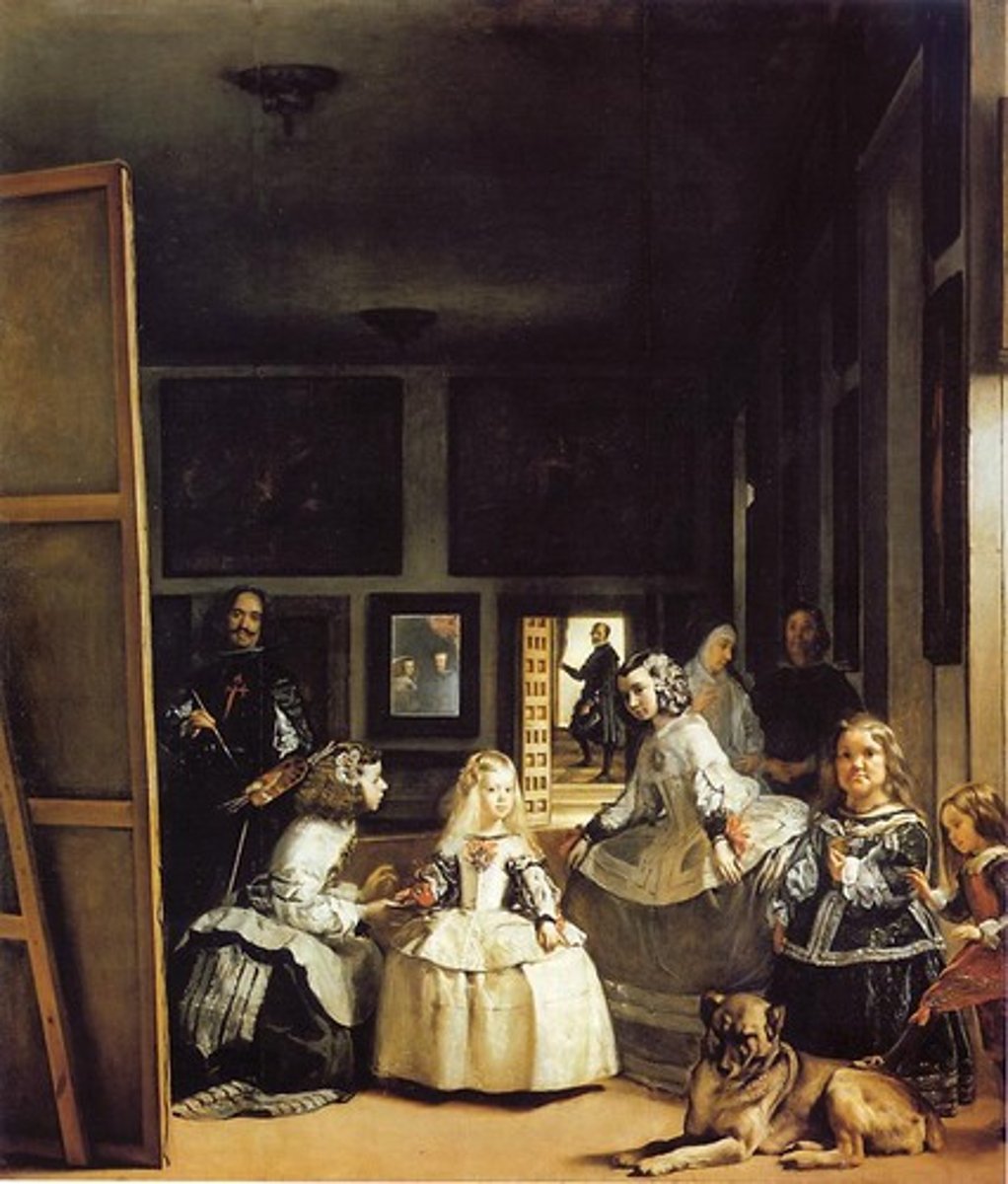
Artist: Bartolomé Esteban Murillo
Title: Immaculate Conception of the Escorial
Medium: Oil on canvas
Location: n/a
Period: Spanish Baroque
Significance: a catholic doctrine stating that the Virgin Mary was conceived without original sin

Artist: Peter Paul Rubens
Title: Consequences of War
Medium: Oil on canvas
Location: Galleria Palatina, Palazzo Pitti, Florence, Italy
Period: Flemish Baroque
Significance: a powerful allegory condemning the dectructie nature of conflict
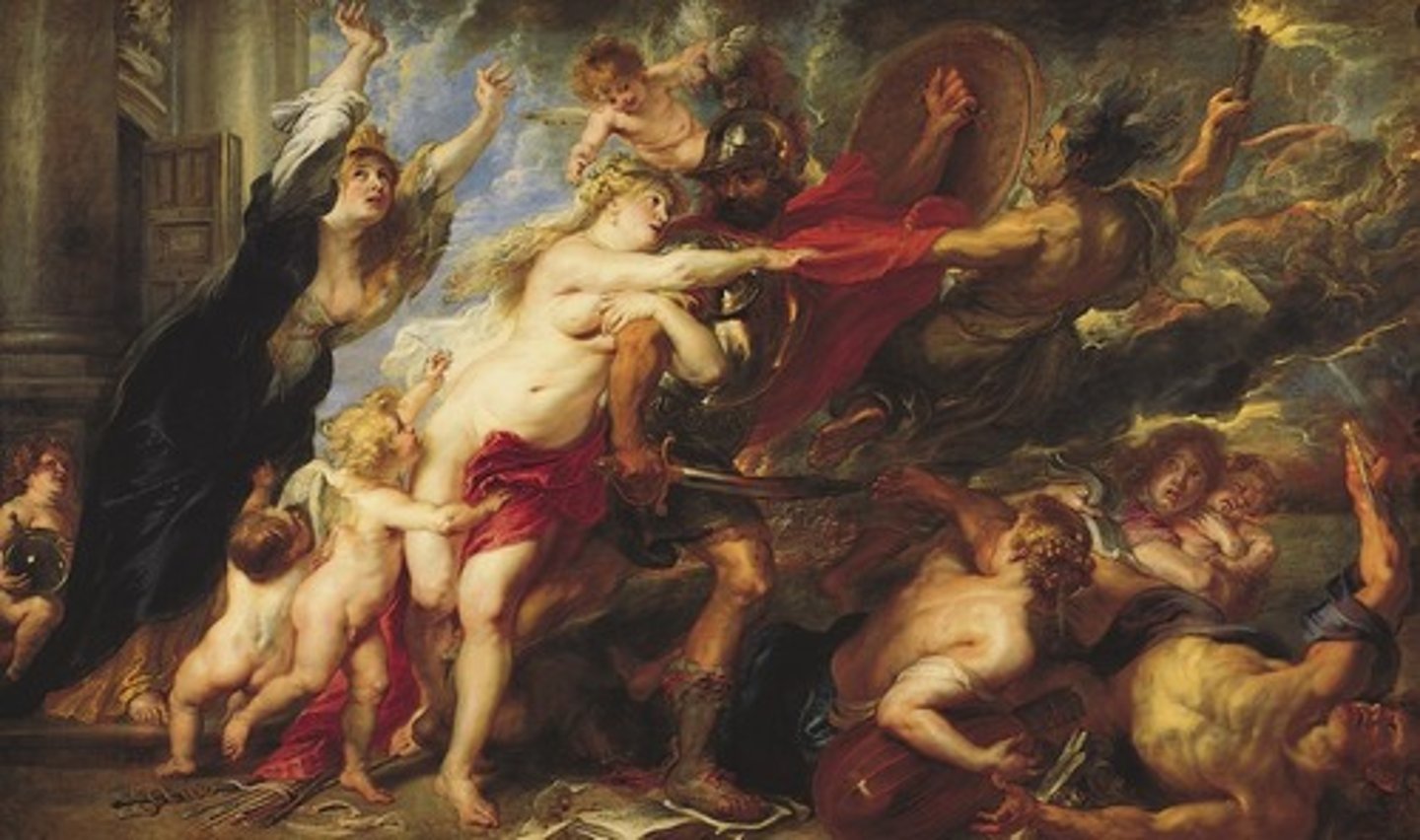
Artist: Johannes Vermeer
Title: Woman Holding a Balance
Medium: Oil on canvas
Location: n/a
Period: Dutch Baroque
Significance: an allegorical depiction of temperance and moderation,
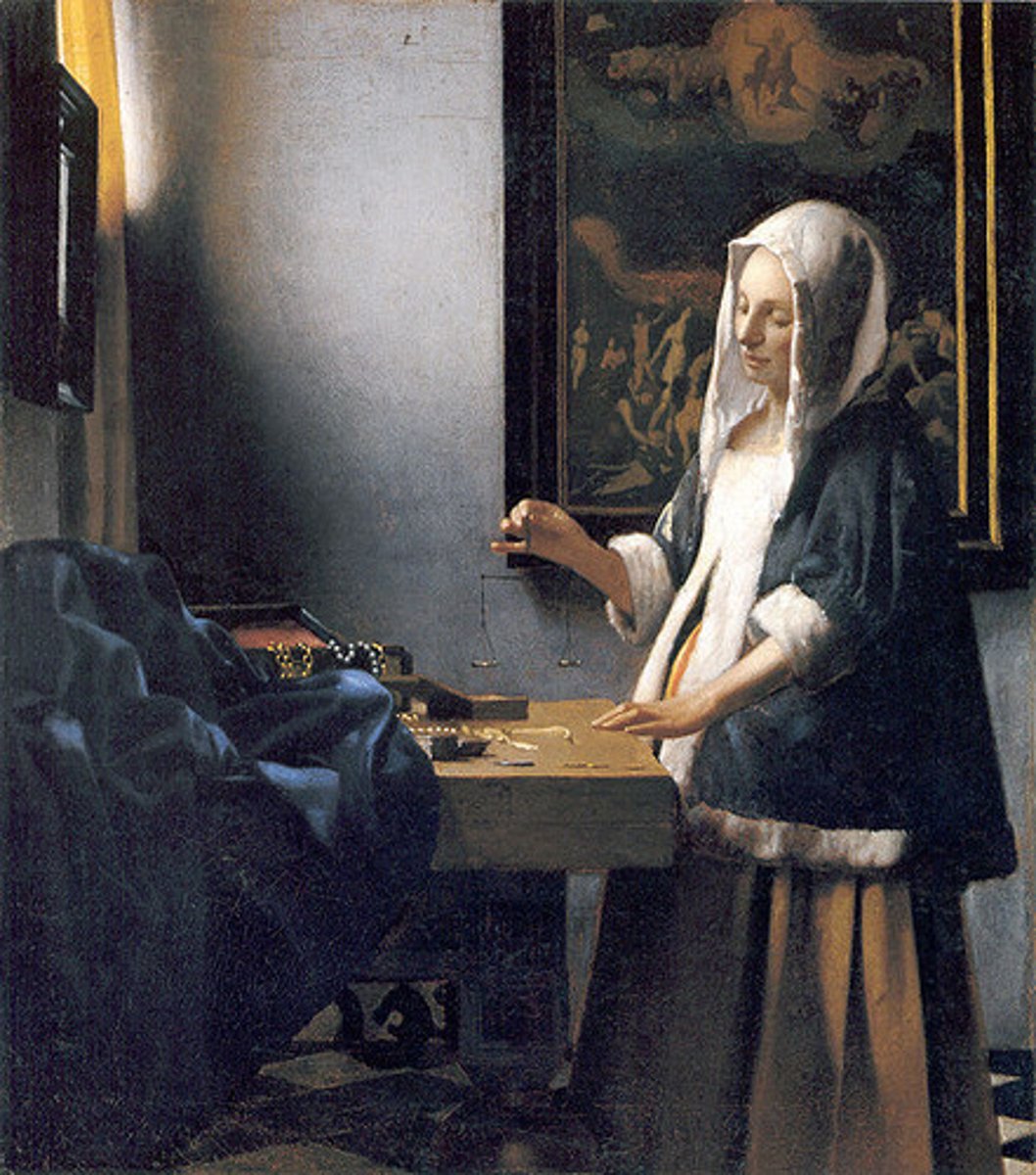
Artist: Rachel Ruysch
Title: Still Life with Flowers
Medium: Oil on wood
Location: n/a
Period: Dutch Baroque
Significance: served as reminders of the transient nature of life and the importance of enjoying the present moment
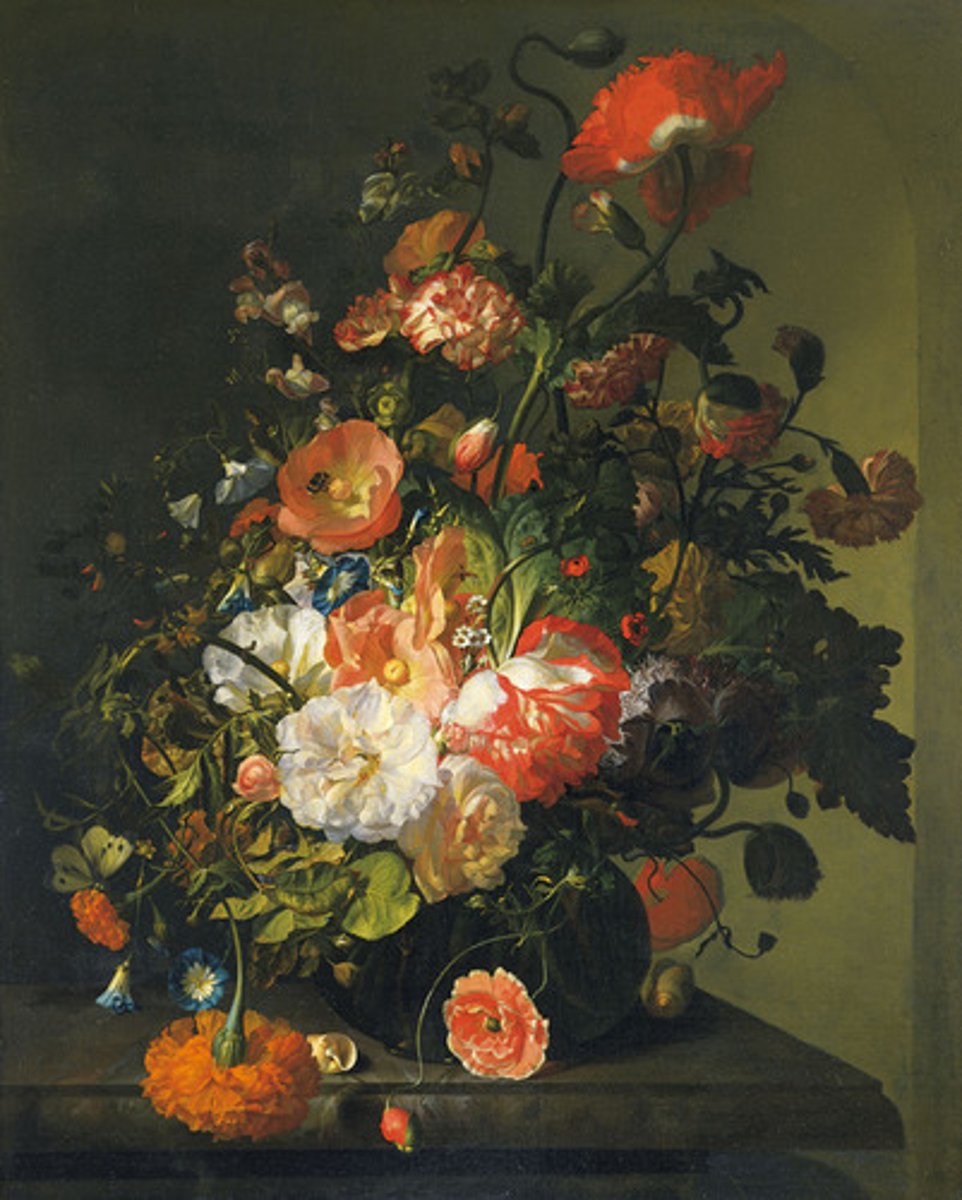
Artist: Jean-Honoré Fragonard
Title: The Swing
Medium: oil on canvas
Location: n/a
Period: Rococo
Significance:an affair between a young woman and her secret lover, with her husband not knowing about the affair while he’s right there
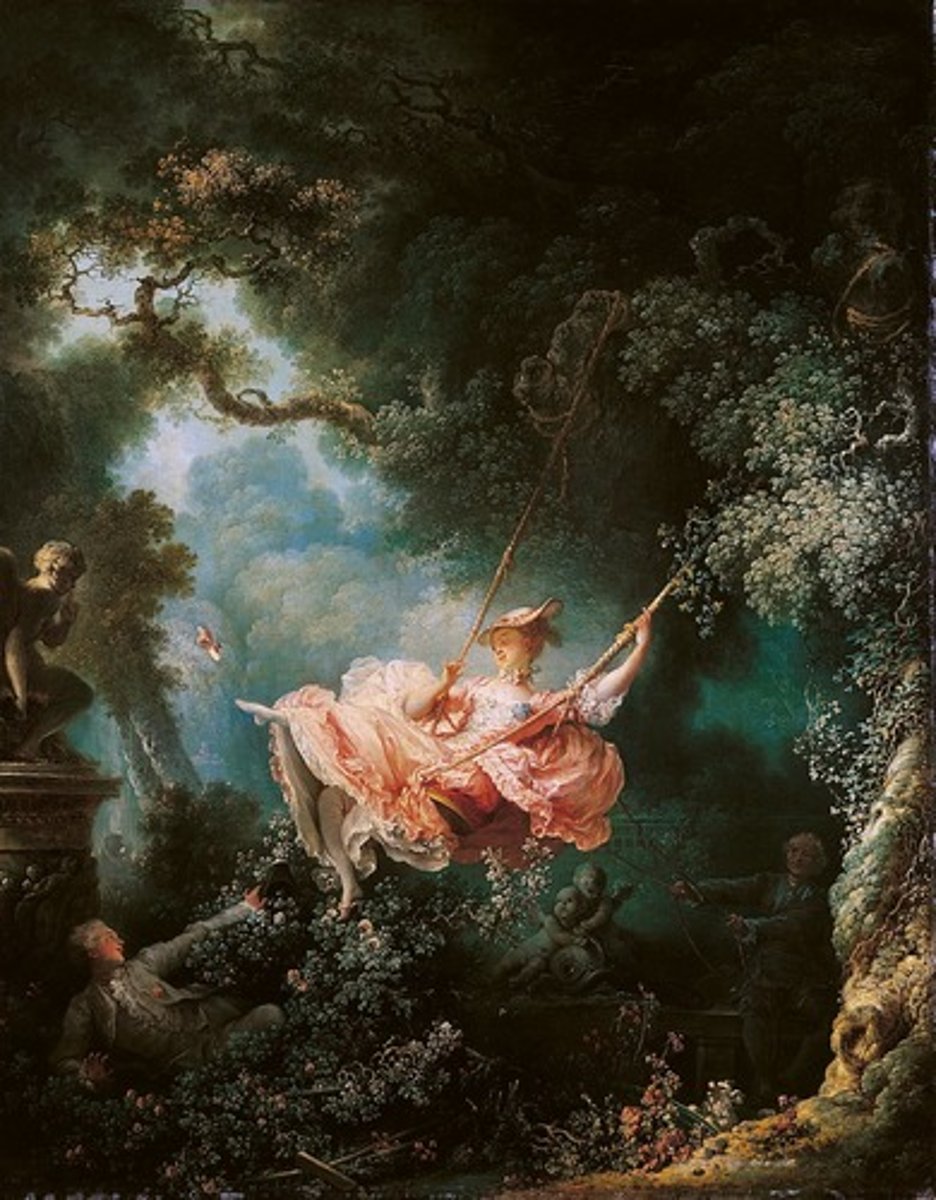
Artist: François Boucher
Title: Cupid a Captive
Medium: Oil on canvas
Location: n/a
Period: Rococo
Significance: depiction of love's allure and the sweet captivity it can bring
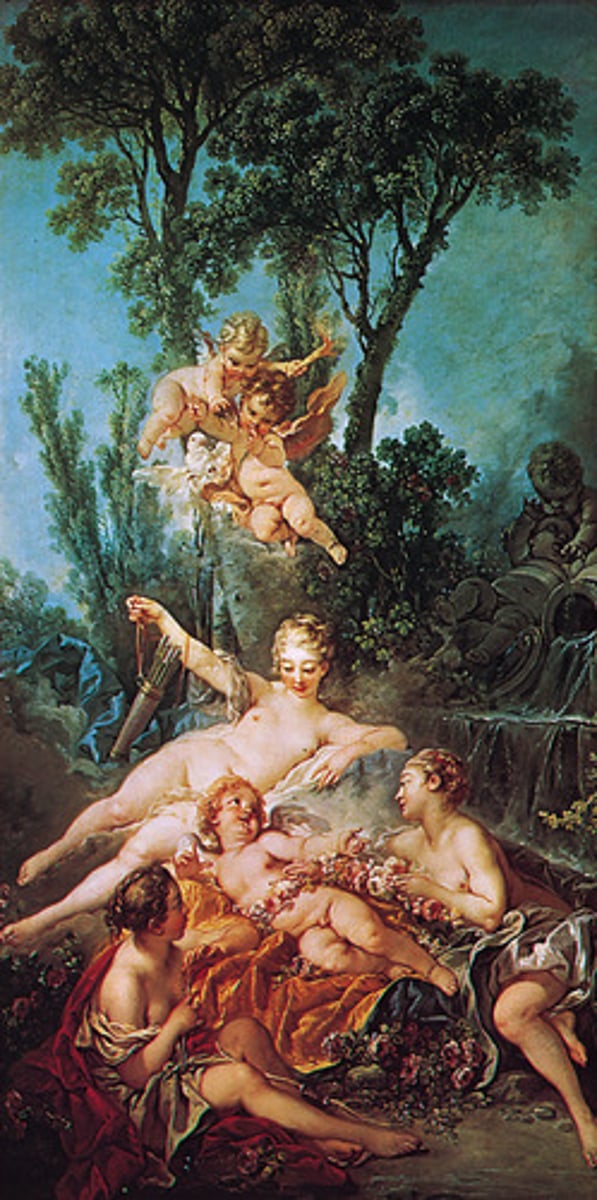
Artist: Antoine Watteau,
Title: Pilgrimage to Cythera
Medium: Oil on canvas
Location: n/a
Period: Rococo
Significance: introduced a new genre, the fête galante.
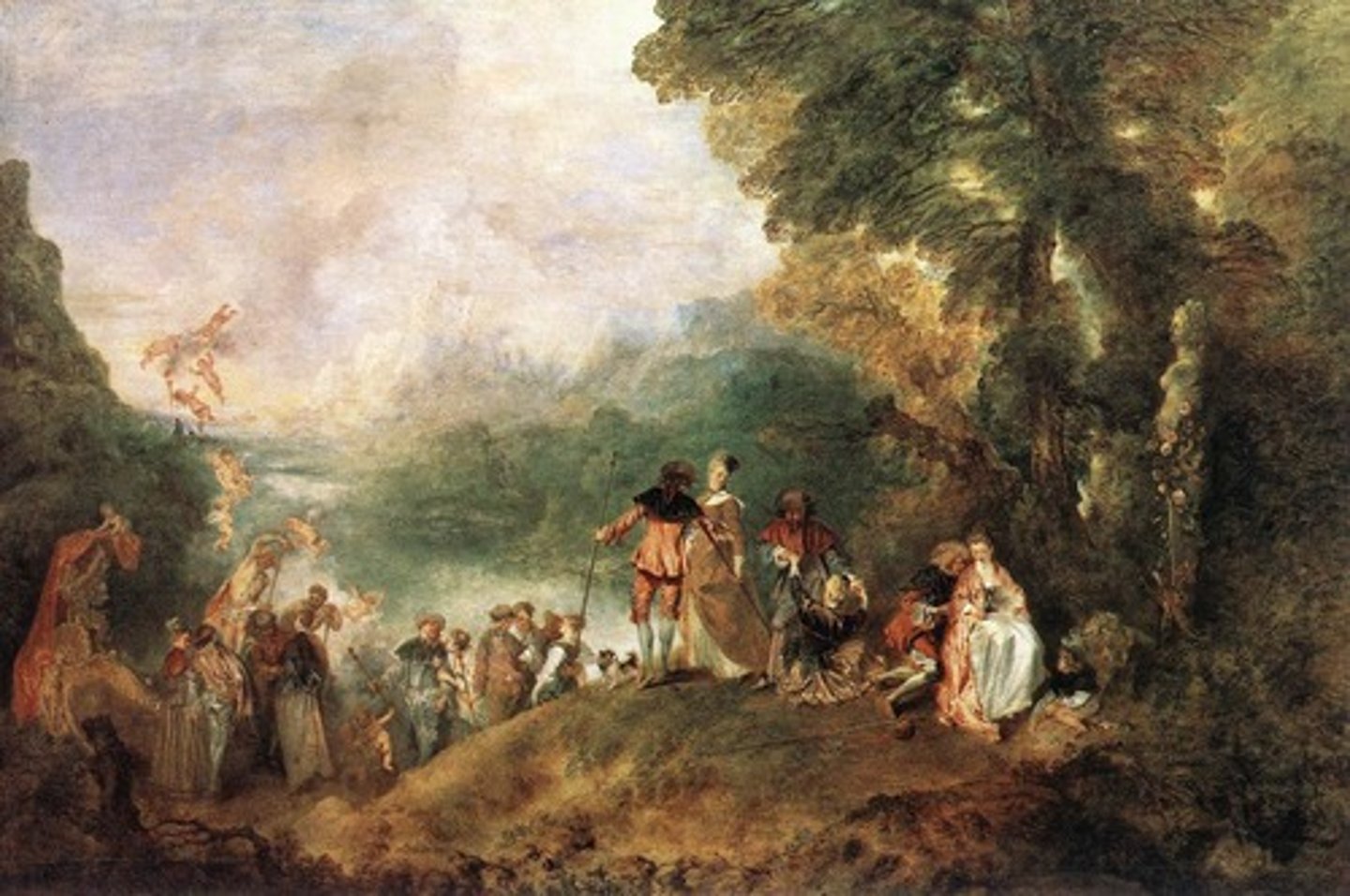
Artist: William Hogarth
Title: Breakfast Scene from Marriage à la Mode
Medium: Oil on canvas
Location: n/a
Period: Eighteenth-century painting
Significance: highlights the disconnect and dissatisfaction between the couple
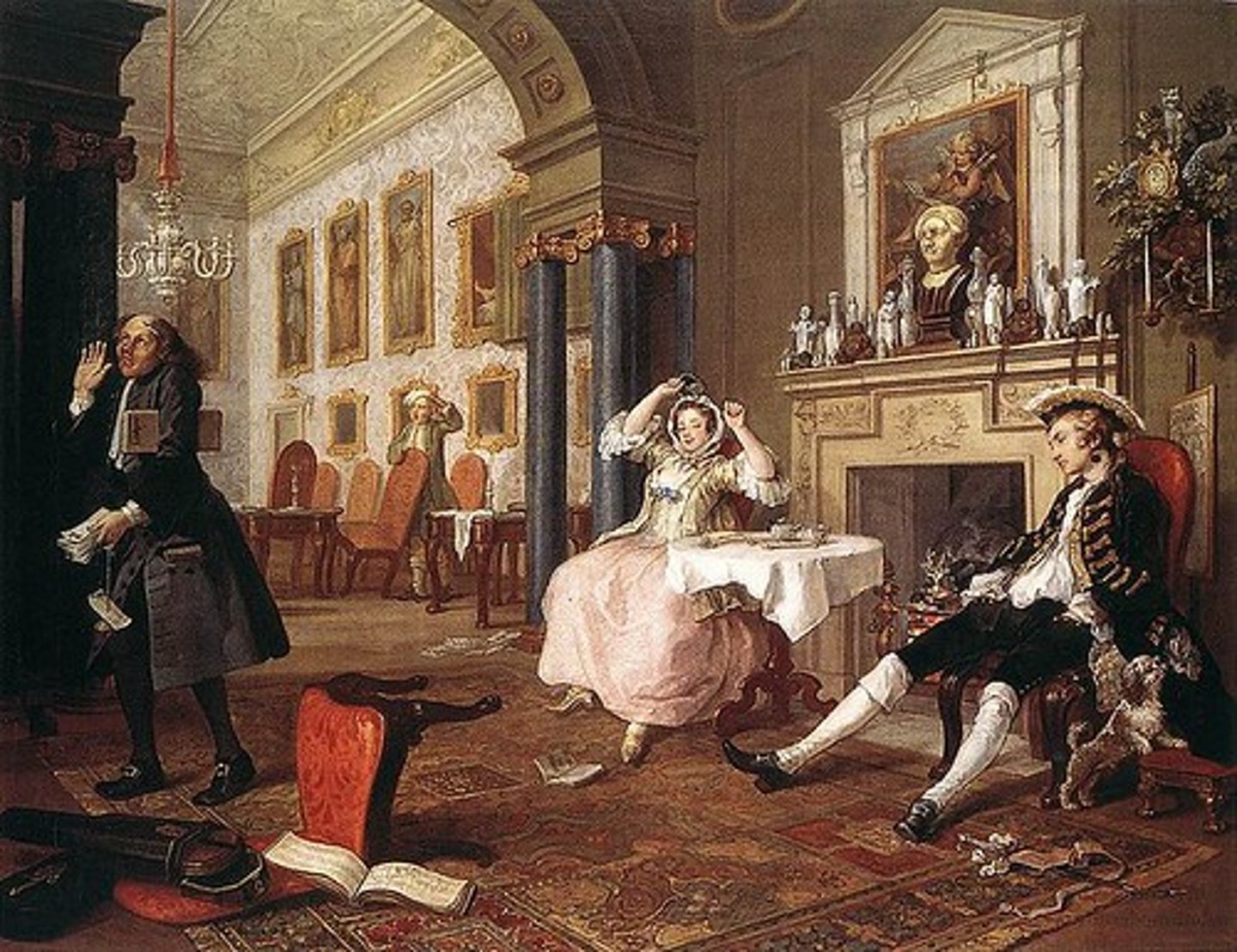
Artist: Joseph Wright of Derby
Title: A Philosopher Giving a Lecture on the Orrery
Medium: Oil on canvas
Period: Eighteenth-century painting
Location: n/a
Significance: shows how people in the Enlightenment saw science as exciting and important, like something to be admired and wondered at.
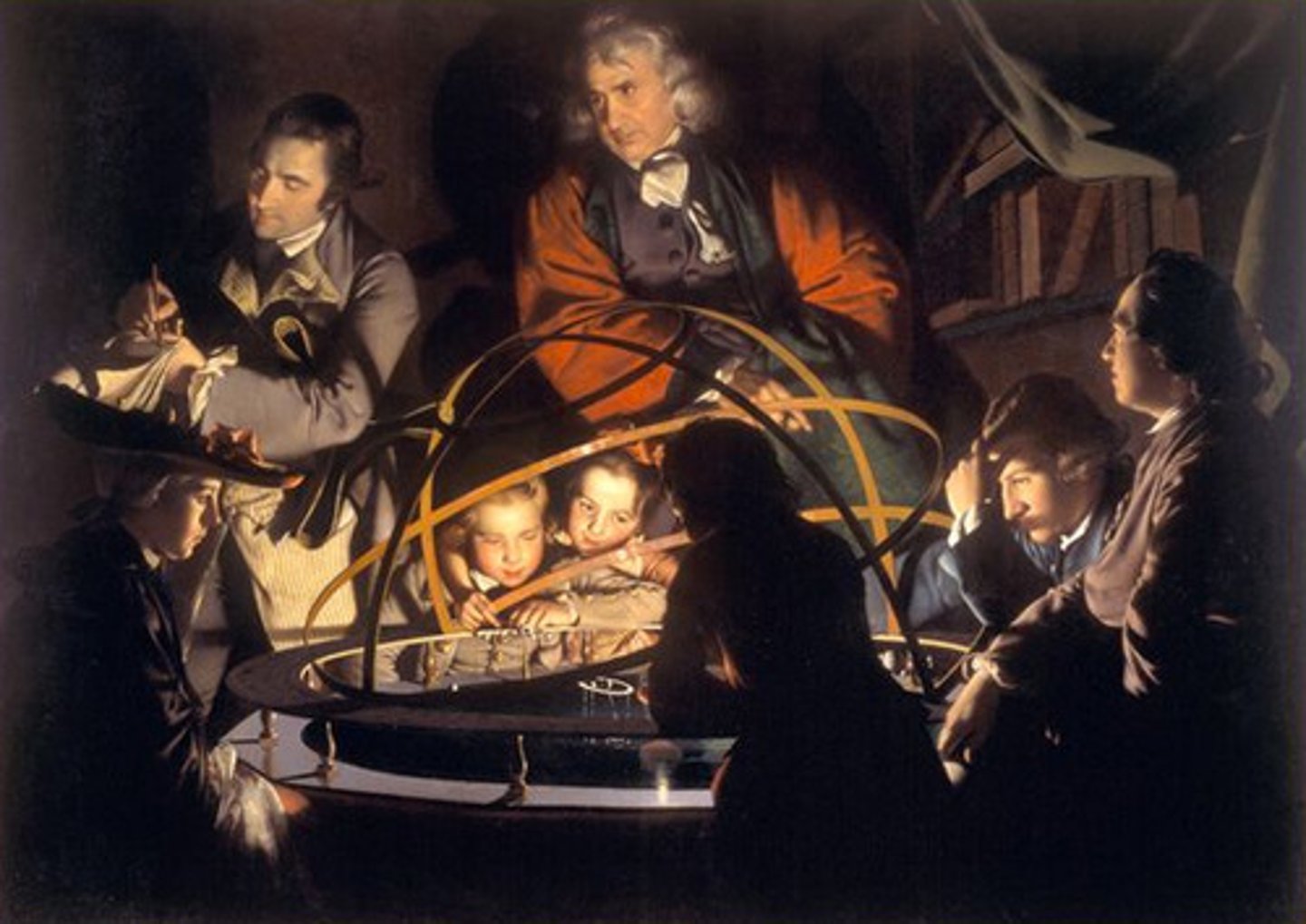
Artist: Joseph Wright of Derby
Title: An Experiment on a Bird in the Air-Pump
Medium: Oil on canvas
Period: Eighteenth-century painting
Location: n/a
Significance: hows the tension between science and emotion during the Enlightenment, highlighting how new discoveries could both inspire wonder and raise ethical questions.
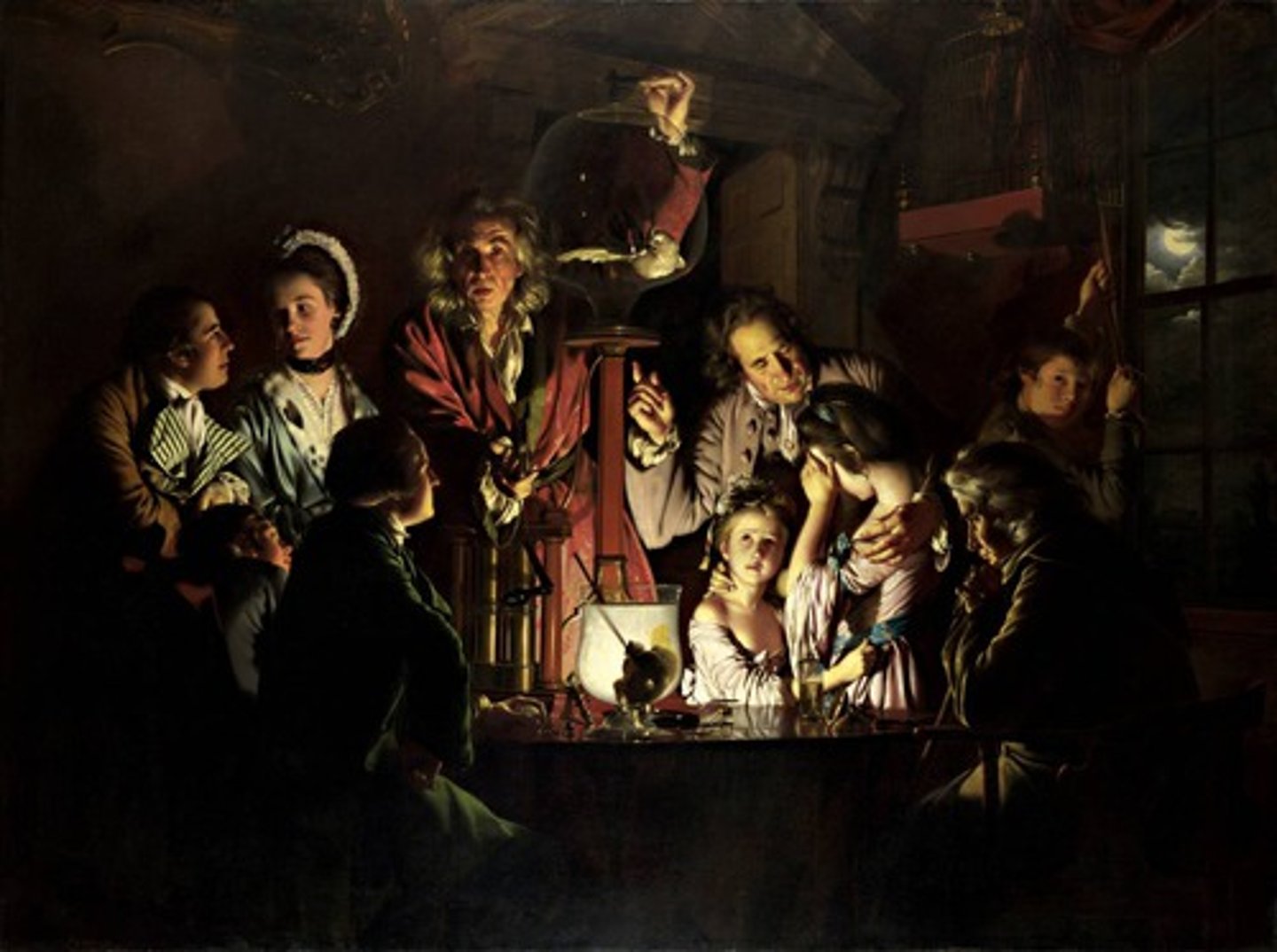
Artist: Jacques-Louis David
Title: The Oath of the Horatii
Medium: Oil on canvas
Period: Neoclassical
Location/a
Significance: shows three brothers pledging to fight for their country, even against family, showing that duty to the nation is more important than personal feelings.
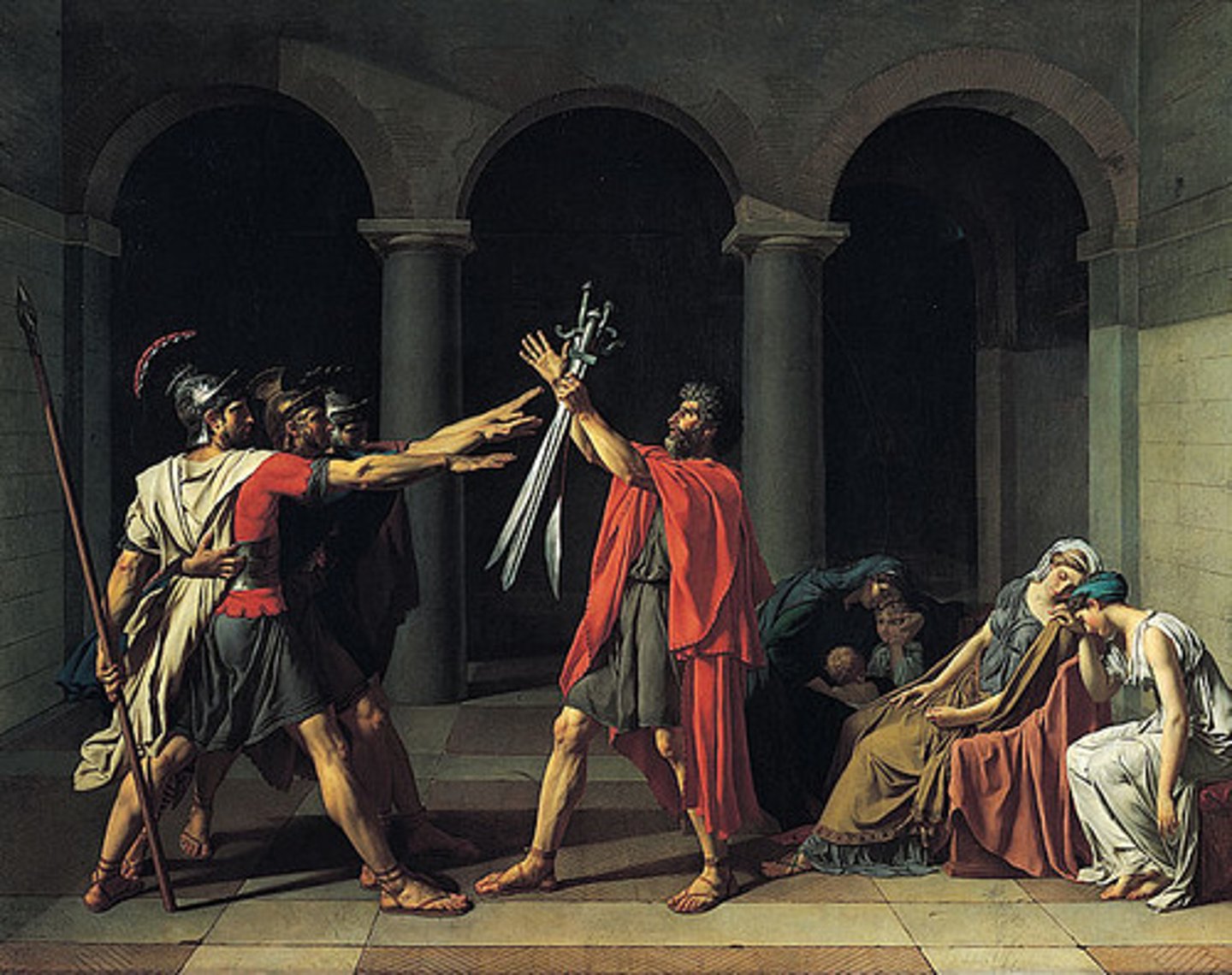
Artist: Jacques-Louis David
Title: Death of Marat
Medium: Oil on canvas
Period: Neoclassical
Location/a
Significance: shows a murdered French revolutionary as a heroic martyr, symbolizing sacrifice for the cause of liberty.
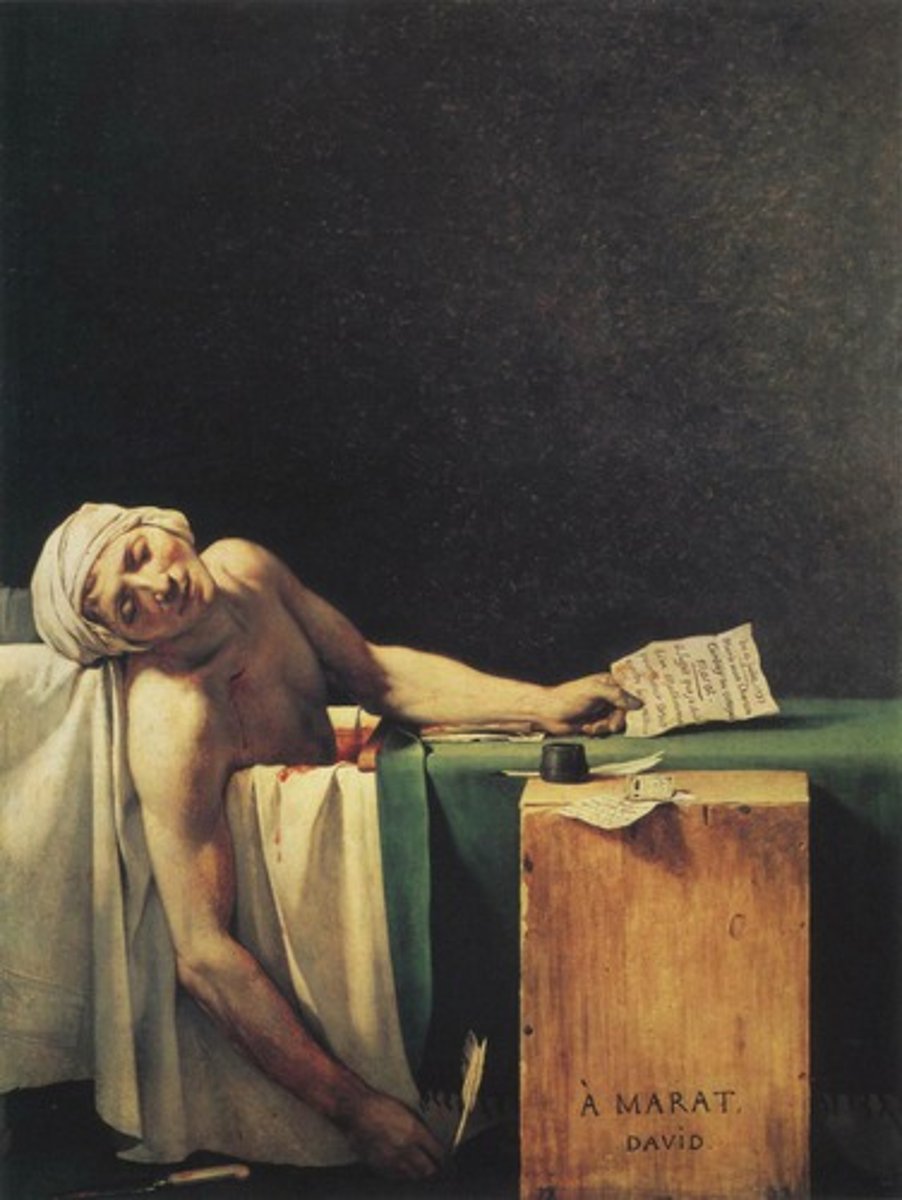
Artist: Francisco Goya
Title: Third of May, 1808
Medium: Oil on canvas
Period: Romanticism
Location: n/a
Significance: shows the brutal execution of innocent Spaniards by French soldiers, highlighting the horrors of war and the cruelty of oppression.
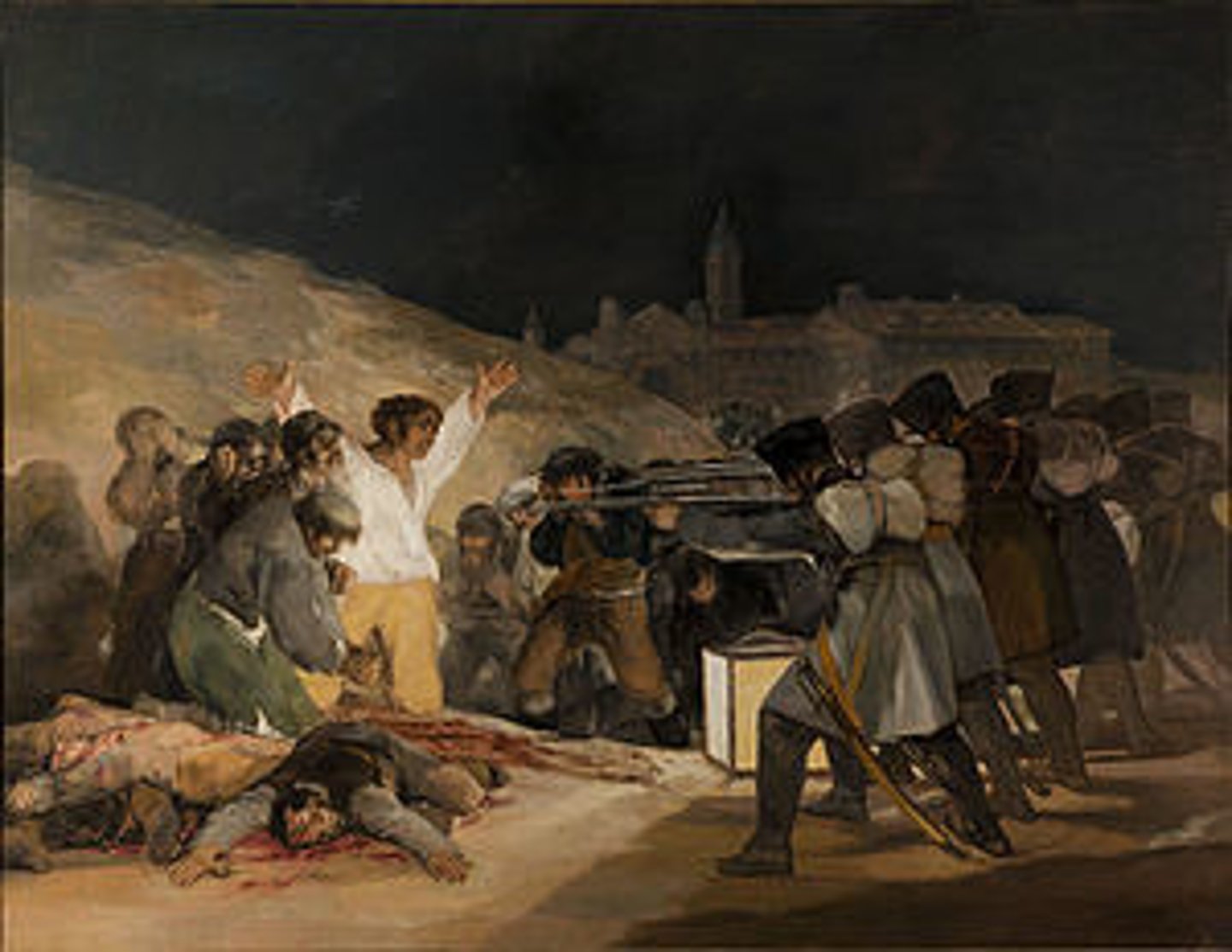
Artist: Eugène Delacroix
Title: Liberty Leading the People
Medium: Oil on canvas
Period: Romanticism
Location/a
Significance:shows a woman symbolizing freedom leading a mix of people in revolution
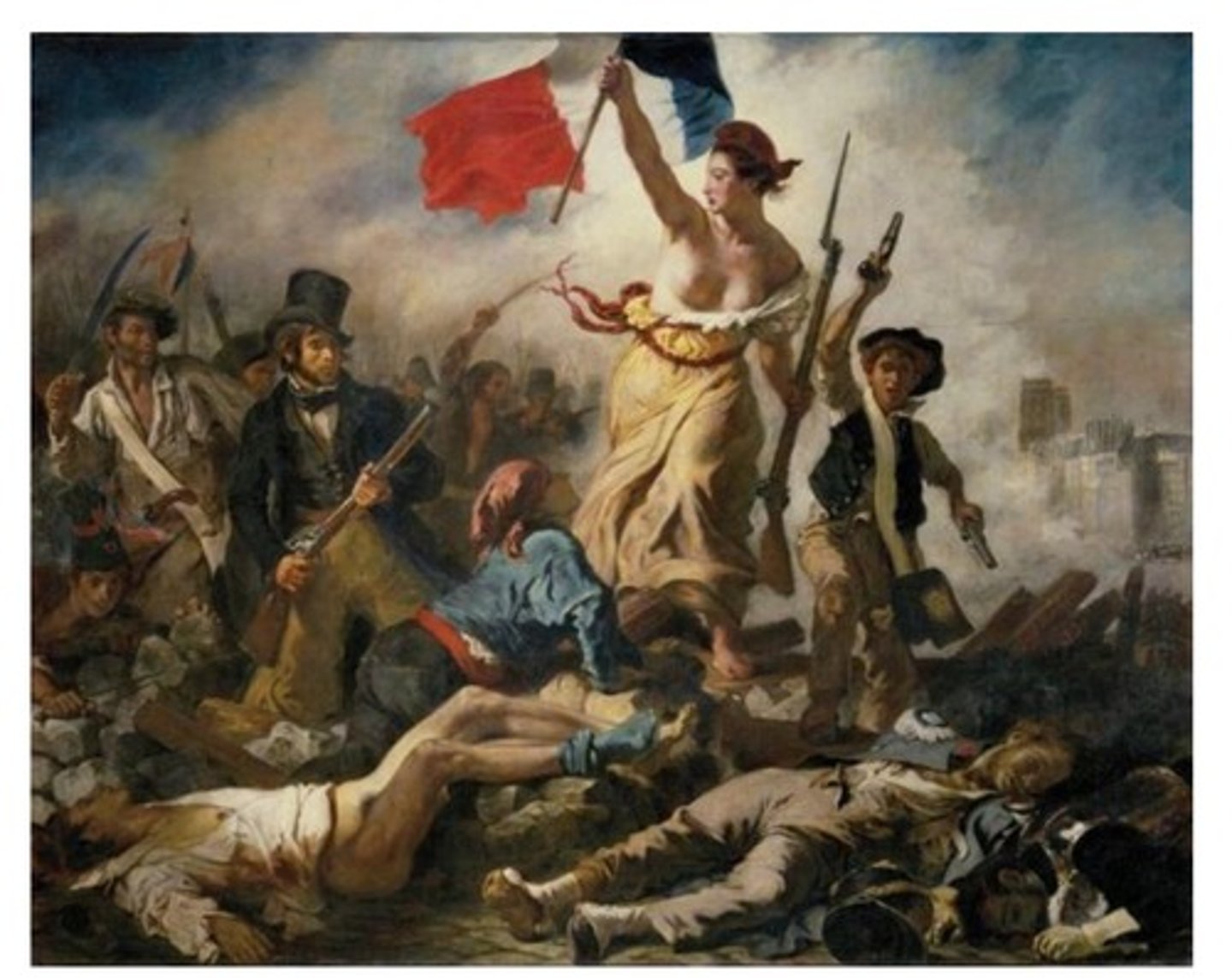
Artist: Théodore Géricault
Title: Raft of the Medusa
Medium: Oil on canvas
Period: Romanticism
Location/a
Significance: Romantic painting that portrays the tragic aftermath of a shipwreck,
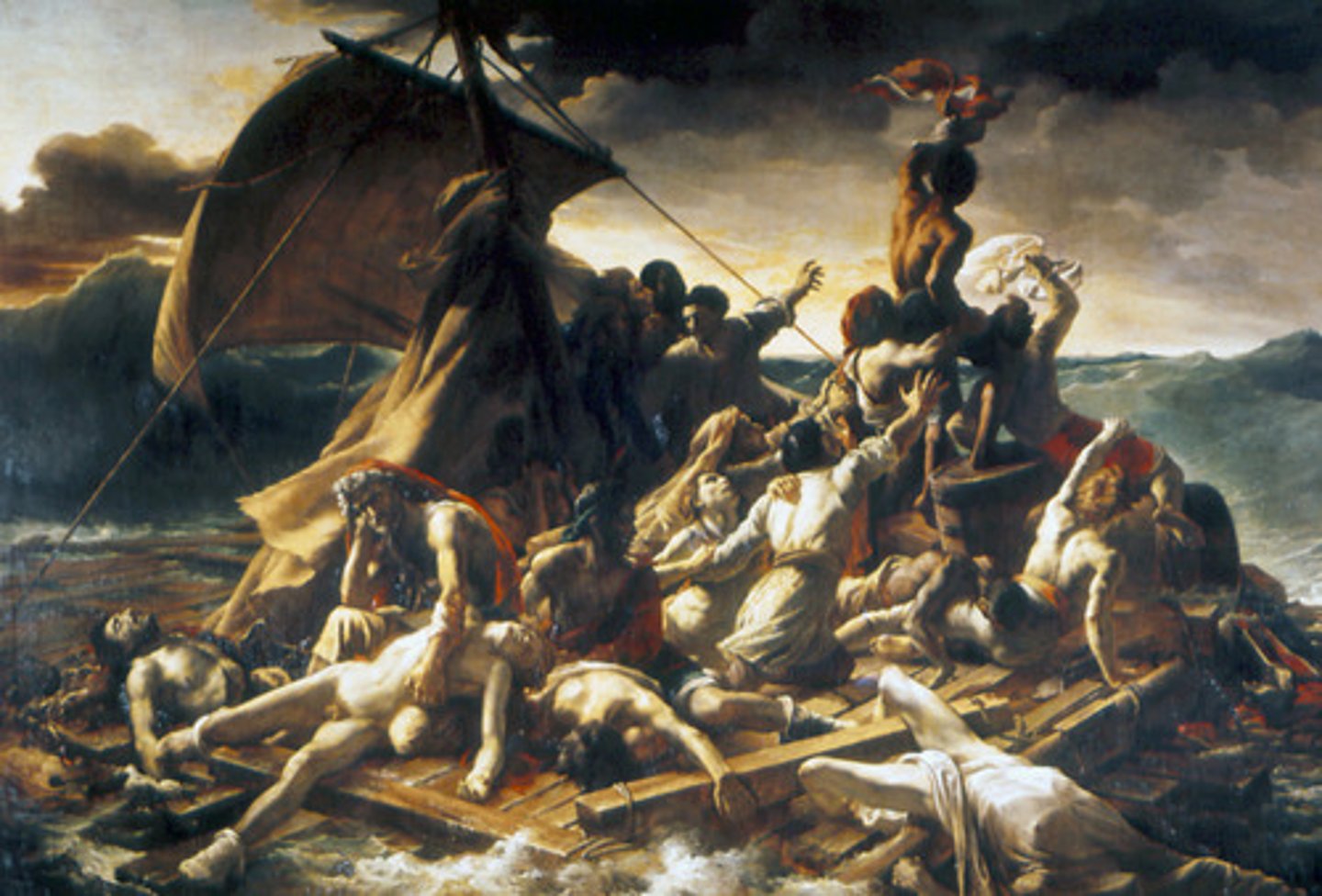
Artist: Thomas Cole
Title: The Oxbow
Medium: Oil on canvas
Period: Romanticism/ Hudson River School
Location: n/a
Significance: painting that symbolizes the contrast between the untamed, natural wilderness of America and the development and civilization
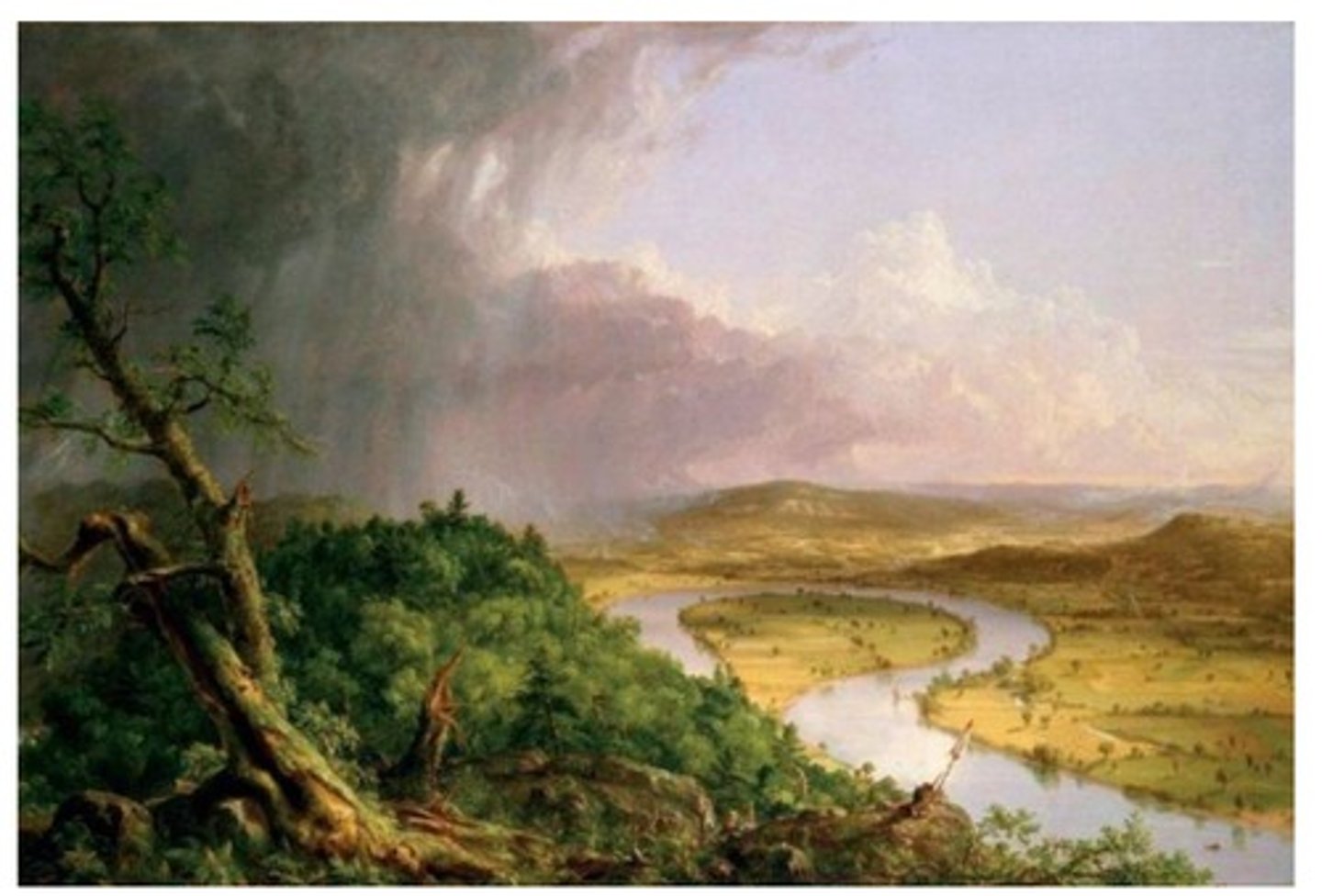
Artist: Gustave Courbet
Title: The Stone Breakers
Medium: Oil on Canvas
Period: Realism
Location: n/a
Significance: significant for its realistic depiction of manual laborers, rejecting idealized or romanticized representations of the working class, and instead highlighting their harsh, physical labor
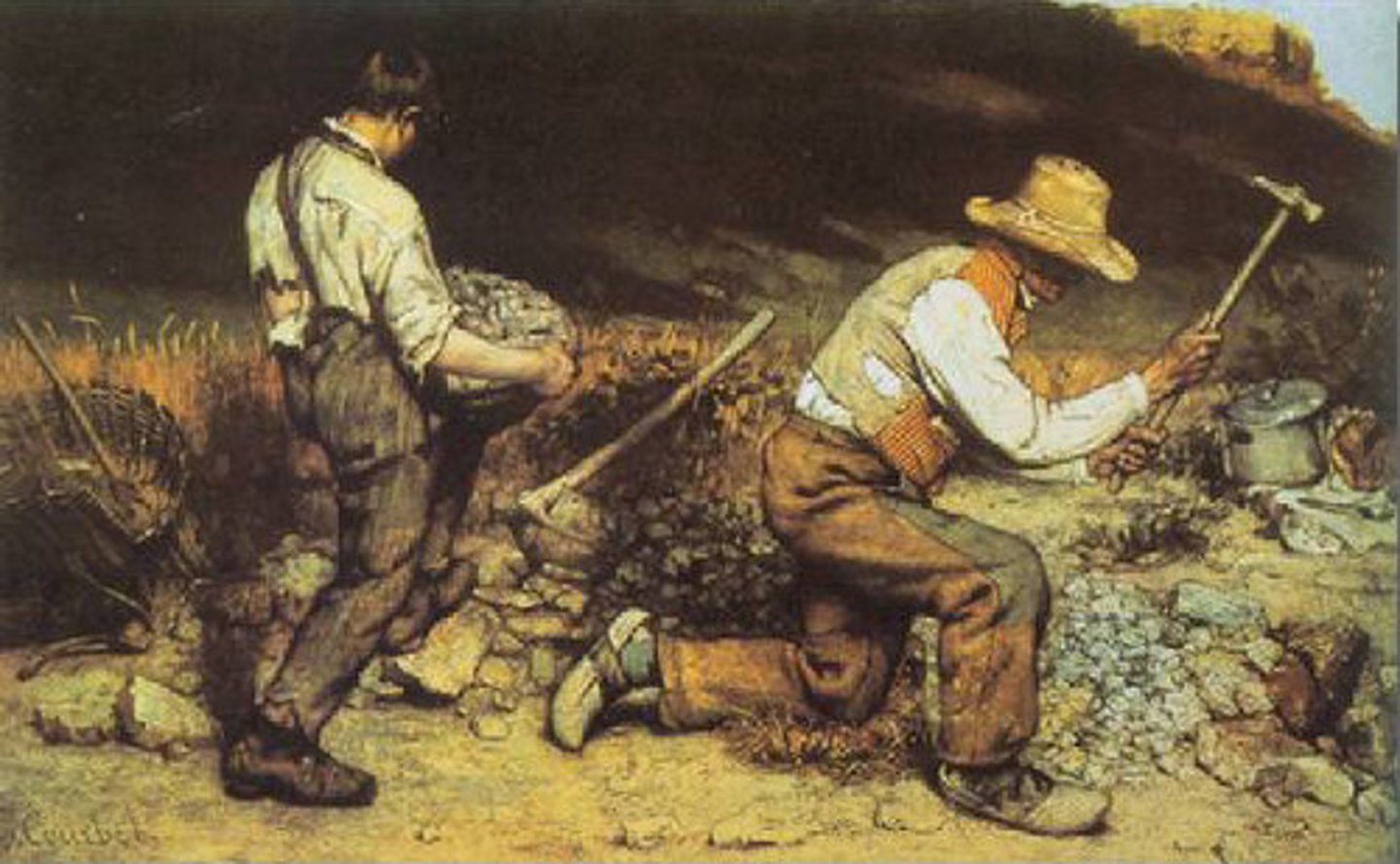
Artist: Edouard Manet
Title: Olympia
Medium: Oil on canvas
Period: Realism
Location: n/a
Significance: challenges traditional depictions of the female nude in art and confronting societal norms around sexuality, class, and the role of women in 19th-century society.
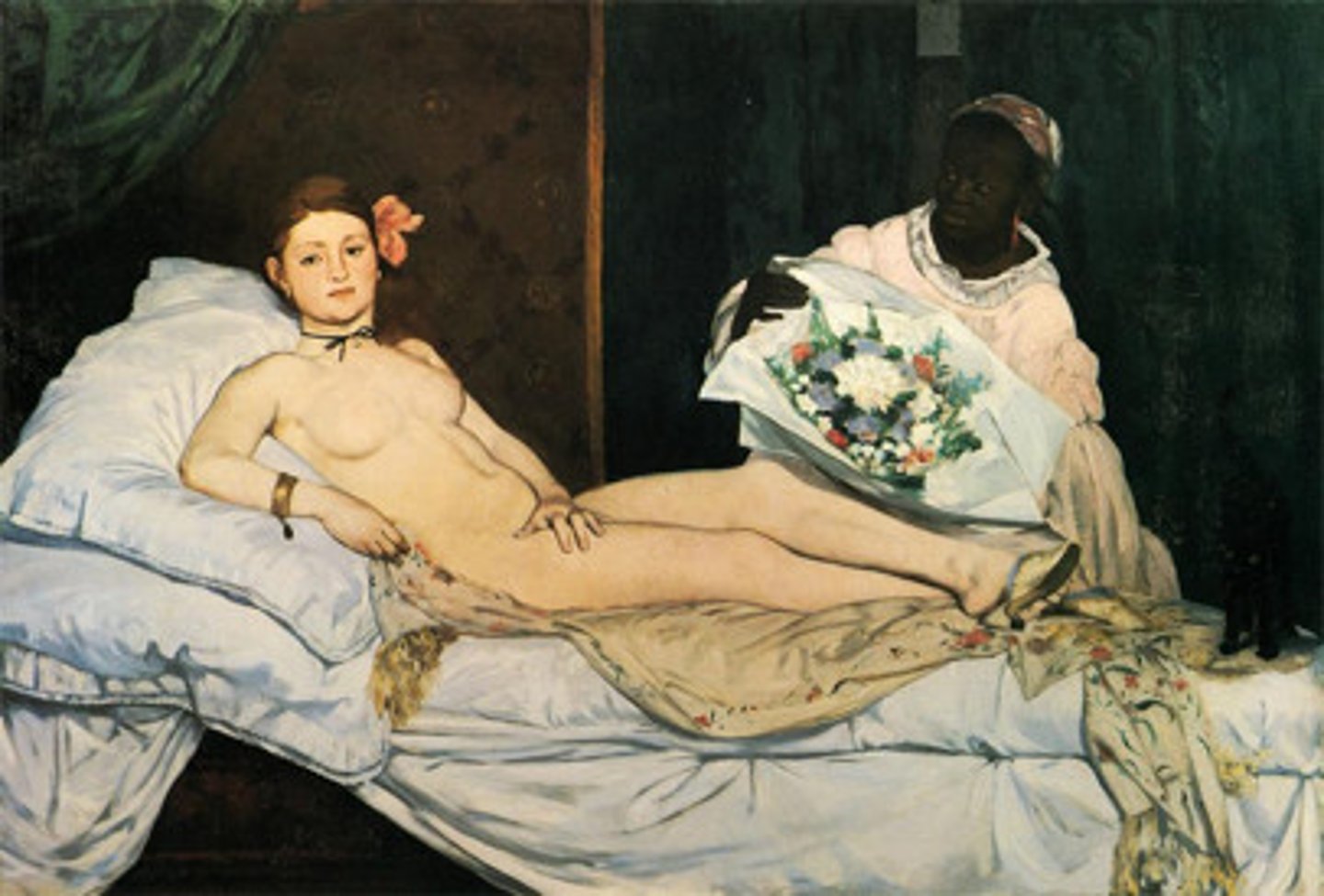
Artist: Henry Ossawa Tanner
Title: The Thankful Poor
Medium: Oil on canvas
Period: Realism
Location: n/a
Significance:significant for its sincere and respectful portrayal of black peoples life, focusing on a quiet, intimate moment.
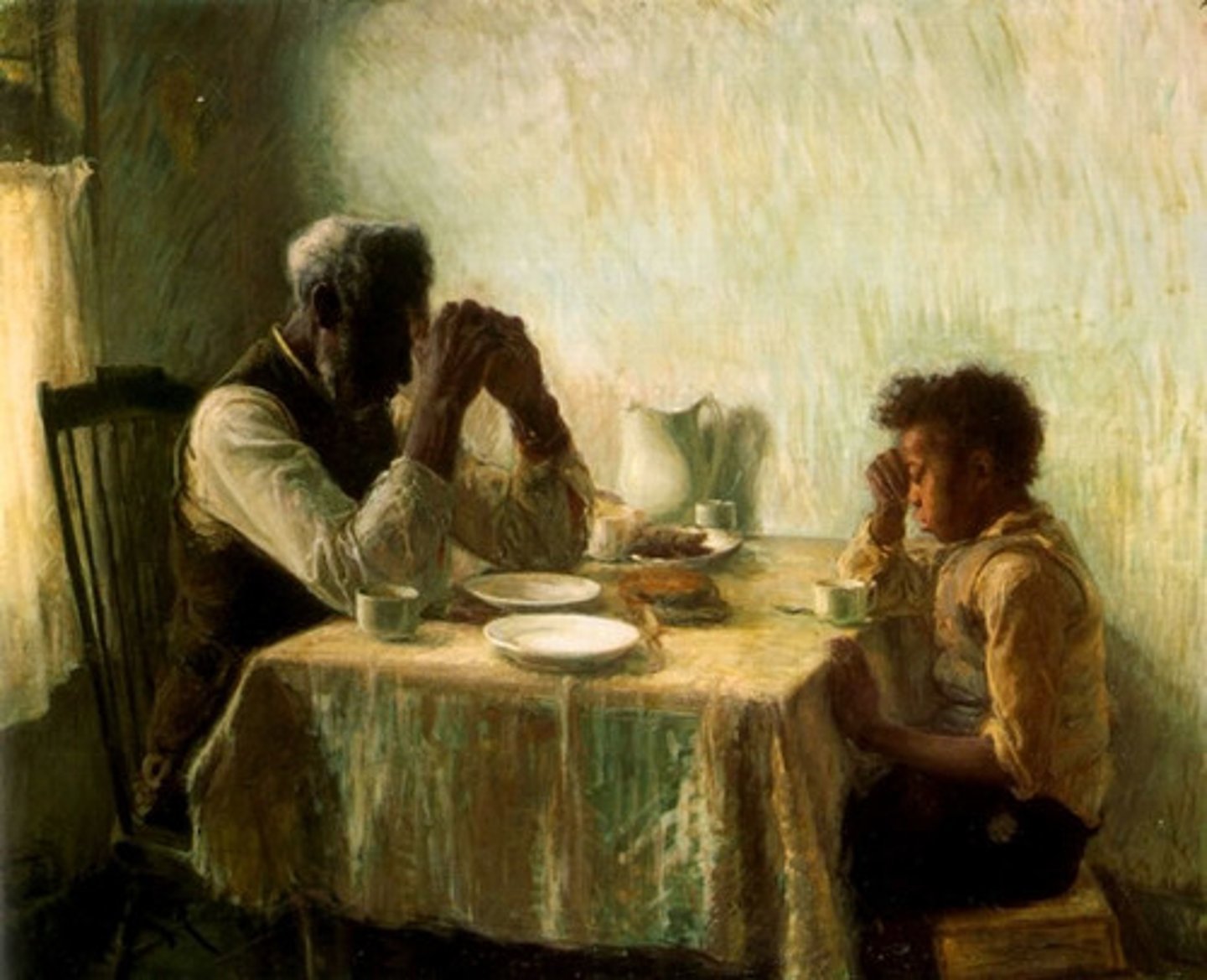
Artist: Jean-François Millet
Title: The Gleaners
Medium: Oil on canvas
Location: n/a
Significance: significant for its realistic and sympathetic portrayal of rural peasants
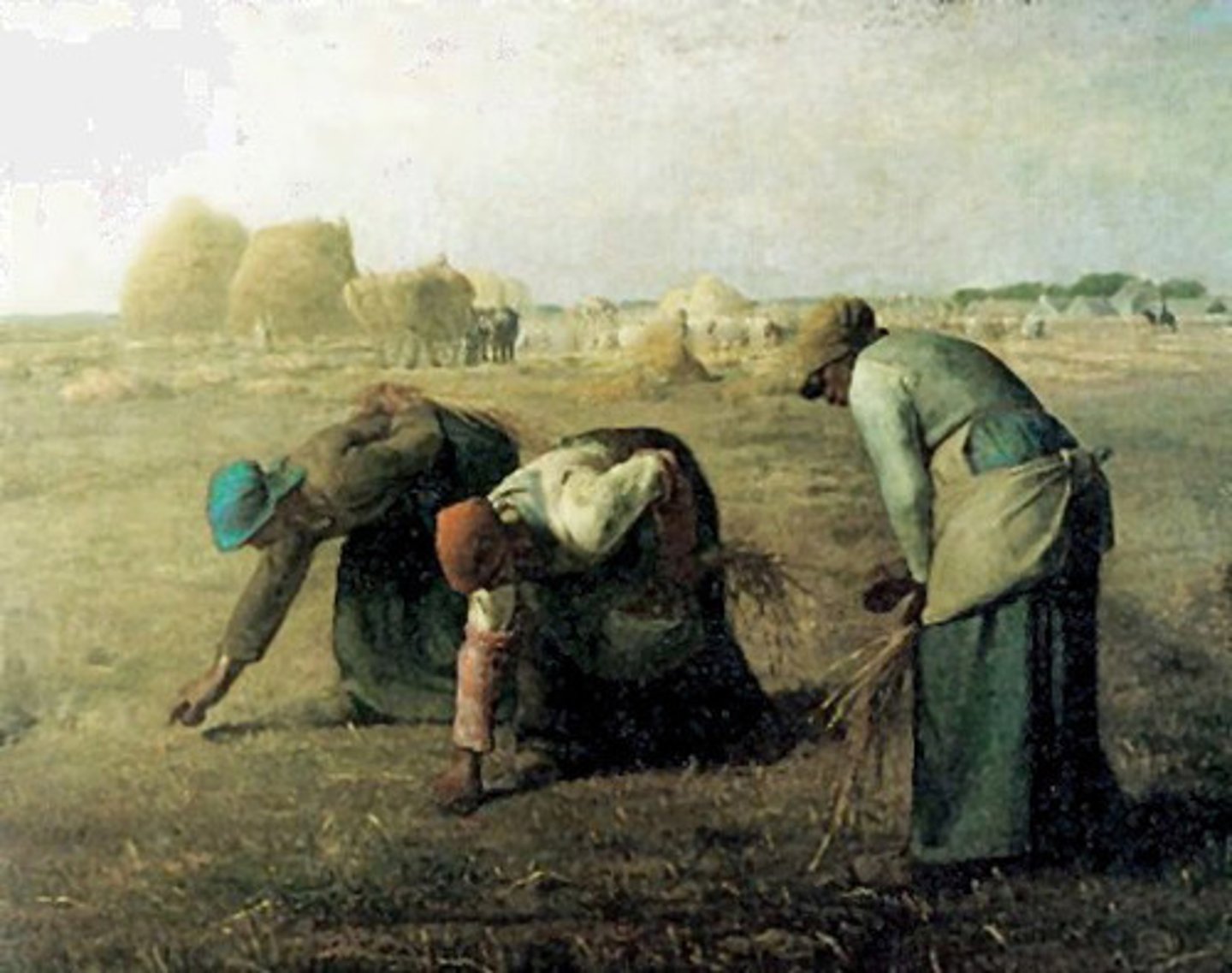
Artist: Claude Monet
Title: The Saint-Lazare Station
Medium: Oil on canvas
Period: Impressionism
Location: n/a
Significance: significant for its innovative depiction of modern life,
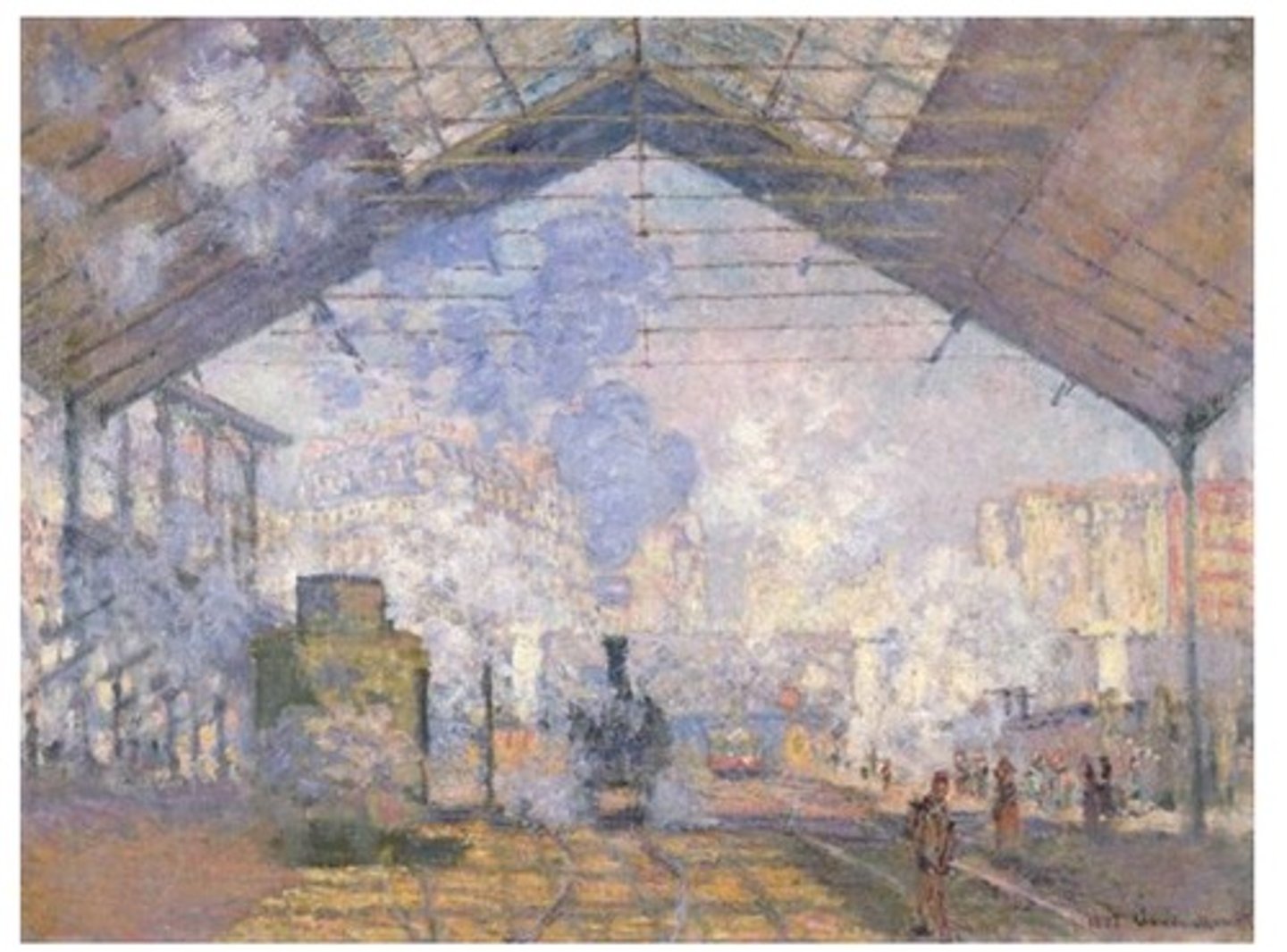
Salon:
a government-sponsored exhibitions of artworks held in Paris
Exemplum virtutis:
a painting that tells a moral tale for the viewer.
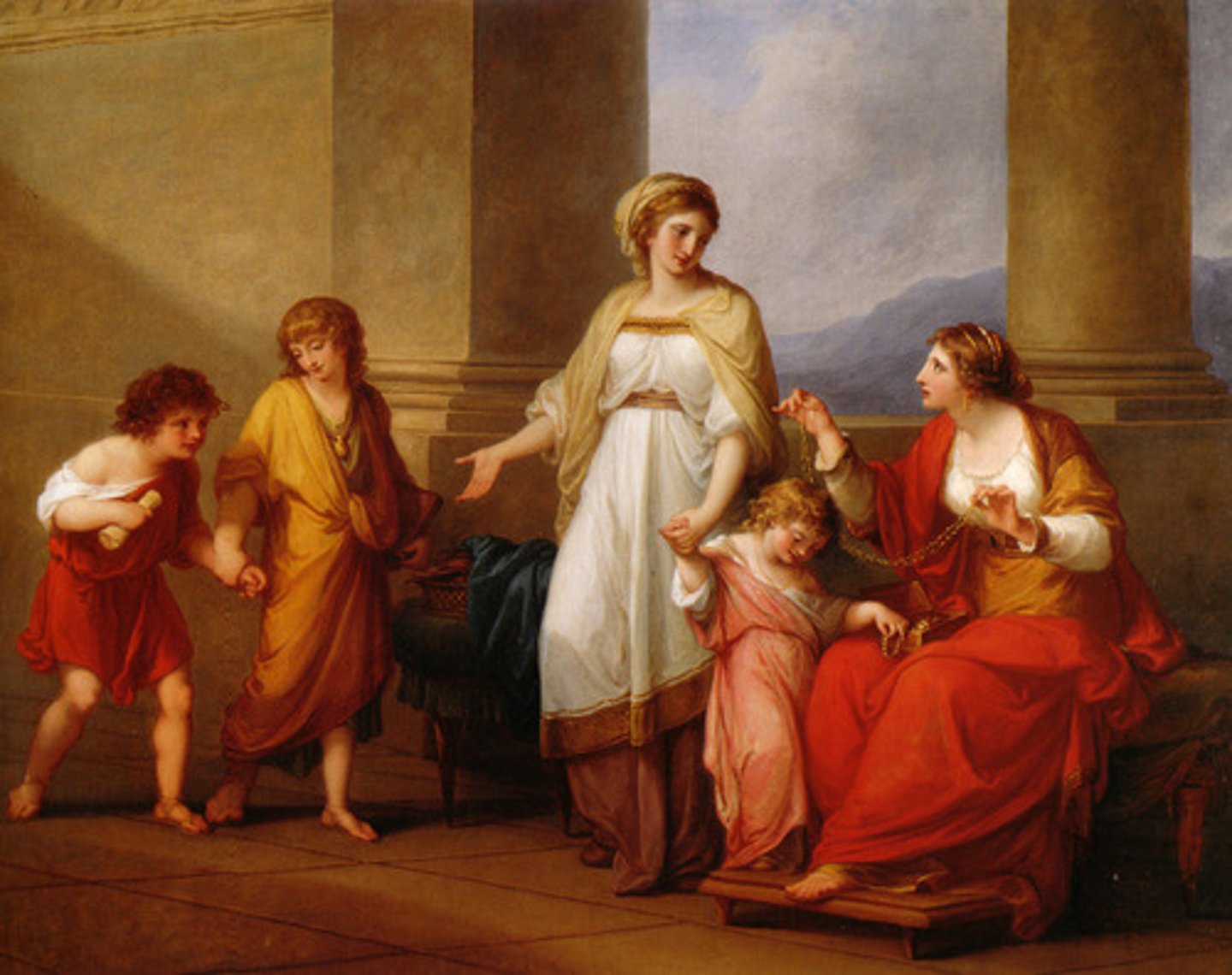
Grand Tour:
in order to complete their education young Englishmen and Americans in the eighteenth-century undertook a journey to Italy to absorb ancient and Renaissance sites
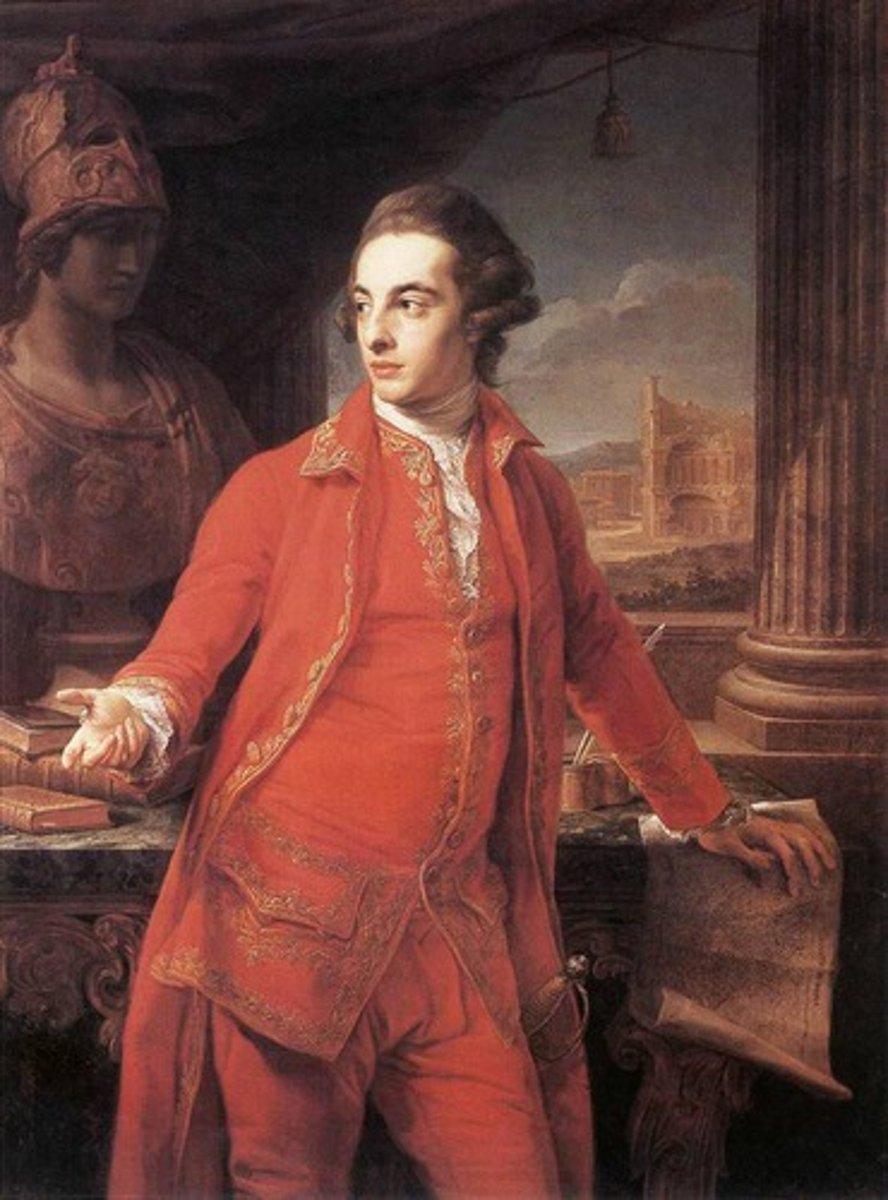
Avant-garde:
An innovative group of artists who generally reject traditional approaches in favor of a more experimental technique
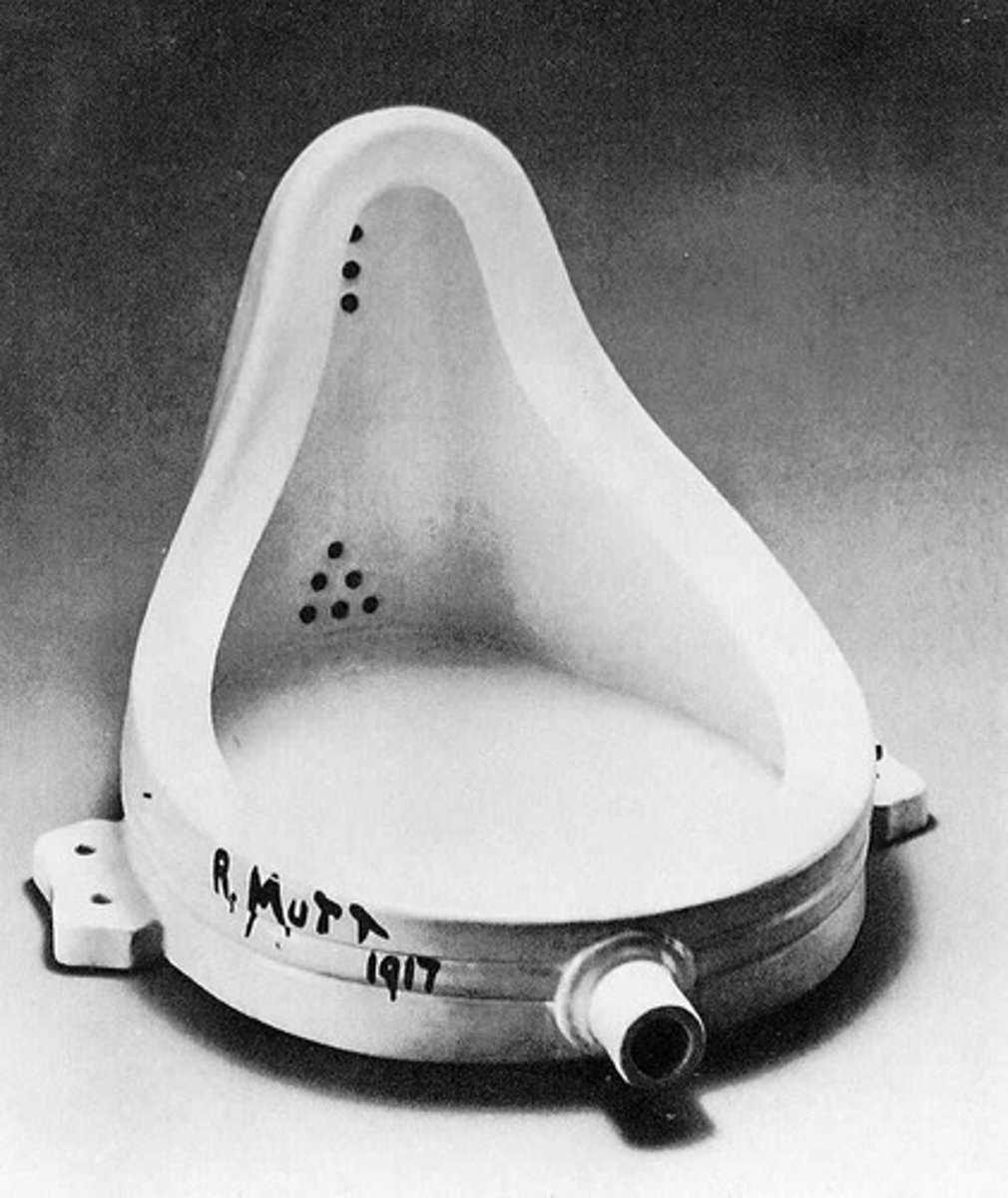
En plein-air:
painting outdoors to directly capture the effects of light and atmosphere on a given object.

Venice Biennale:
A major show of contemporary art that takes place every other year in various venues throughout the city of Venice; begun in 1895
Genre painting:
Painting in which scenes of everyday life are depicted
Impasto:
A thick and very visible application of paint on a painting surface
Tenebrism:
A dramatic dark and light contrast in a painting
Vanitas:
A theme in still life painting that stresses the brevity of life and the folly of human vanity
Dada
An early-20th-century art movement prompted by a revulsion against the horror of World War I. Dada embraced political anarchy, the irrational, and the intuitive. A disdain for convention, often enlivened by humor or whimsy, is characteristic of the art the Dadaists produced.
The sublime:
Any cathartic experience from the catastrophic to the intellectual that causes the viewer to marvel in awe wonder and passion.
Prix de Rome:
Rome Prize
Orrey:
Technological model used to demonstrate a theory of the universe
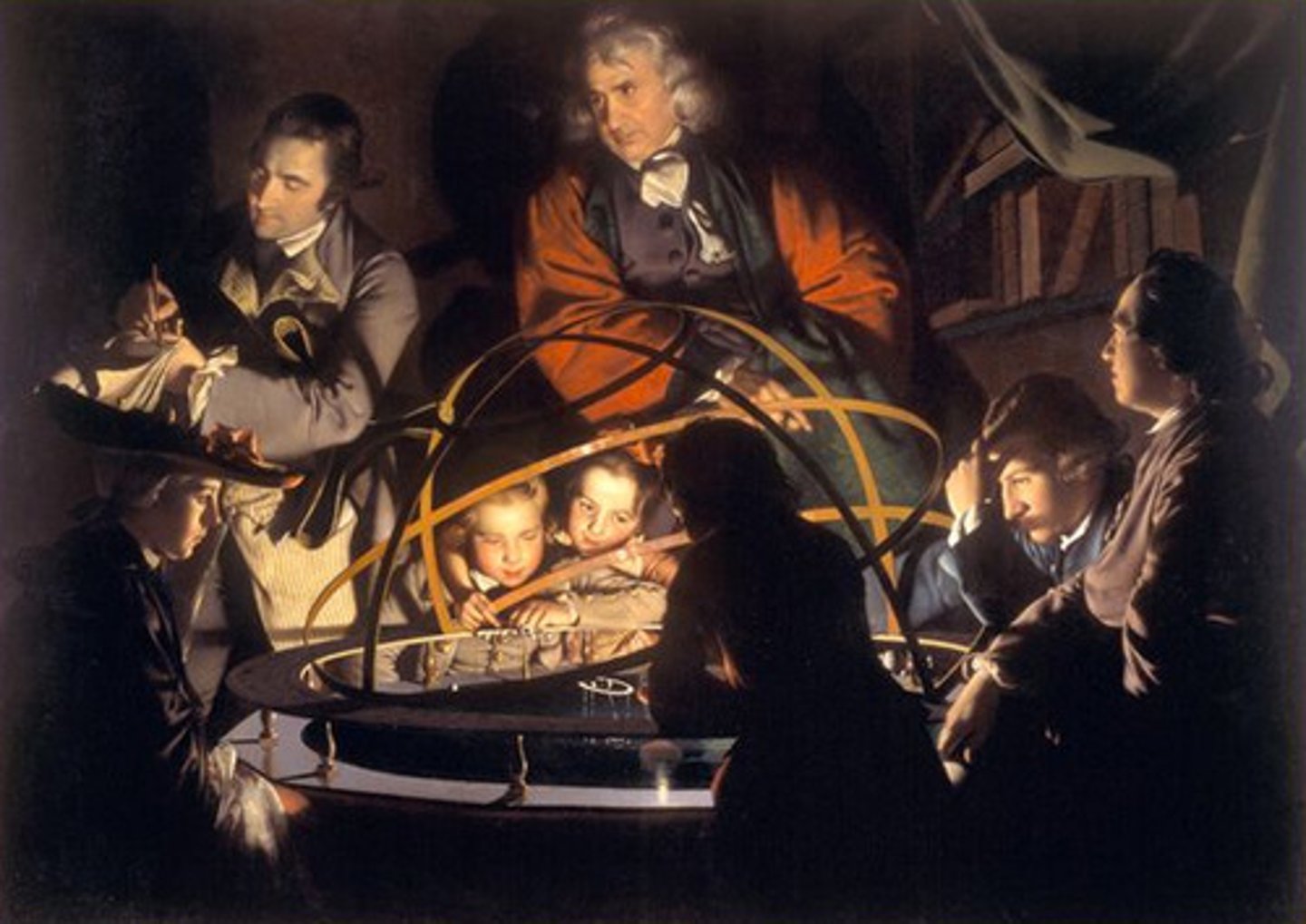
Fête galante:
an eighteenth-century French style of painting that depicts the aristocracy walking through a forested landscape
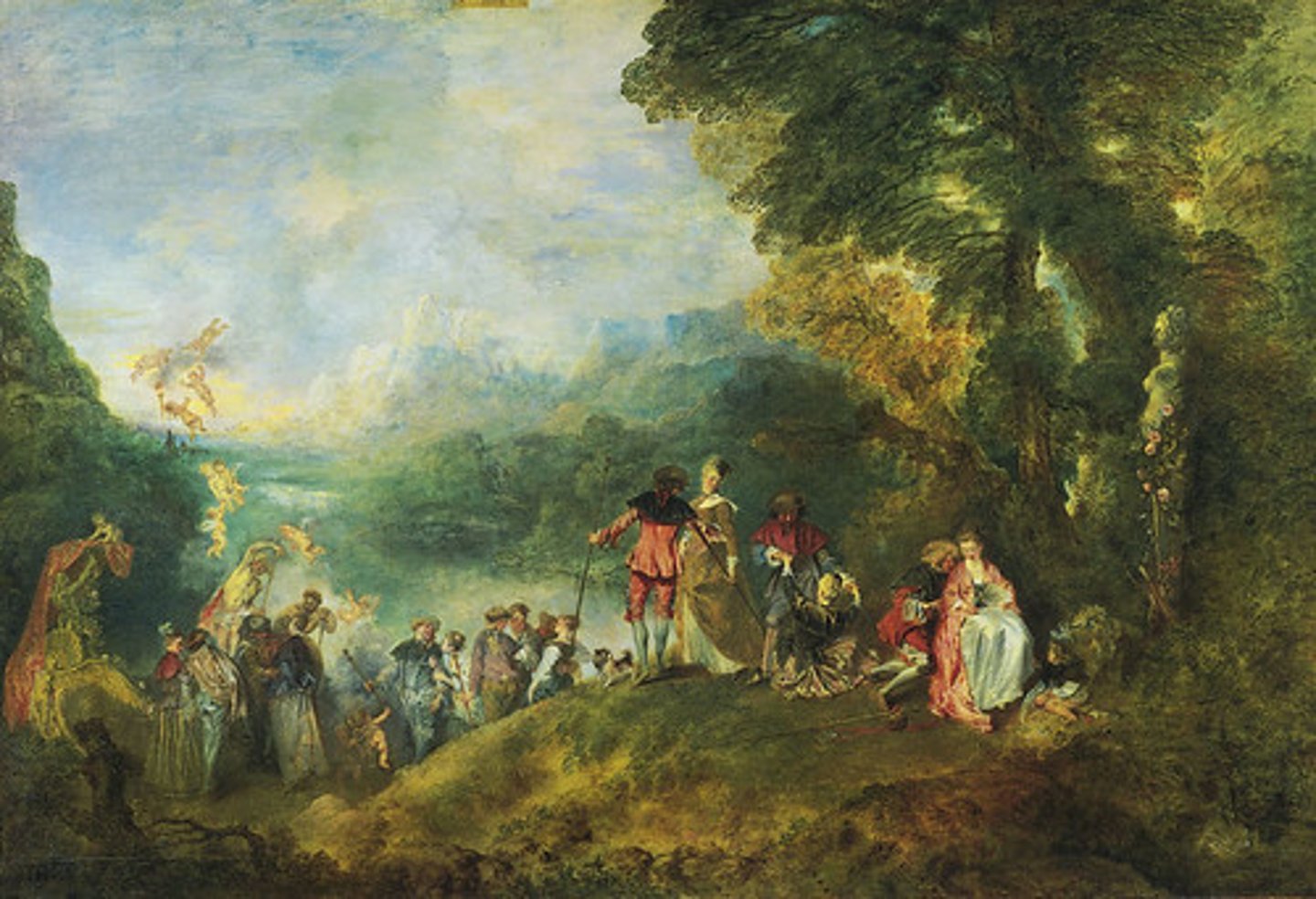
Impressionism:
A late-19th-century art movement that sought to capture a fleeting moment, thereby conveying the elusiveness and impermanence of images and conditions.
True color:
An object's true color in white light.
Memento mori:
Latin, "reminder of death." In painting, a reminder of human mortality, usually represented by a skull
Divine right:
The belief in a king's absolute power as God's will.
Gleaning:
The collection by peasants of wheat scraps left in the field after a harvest.